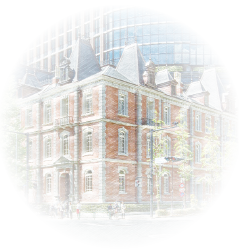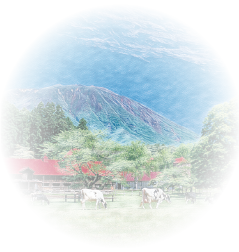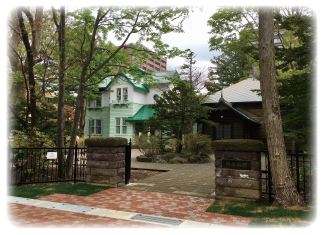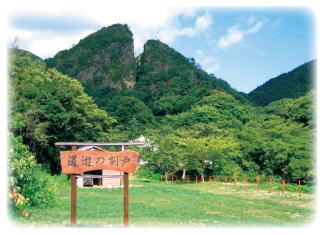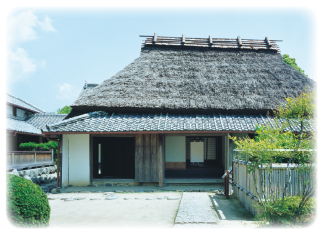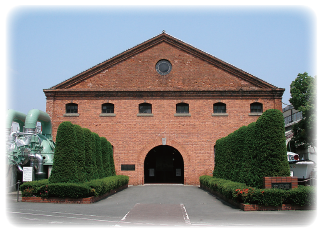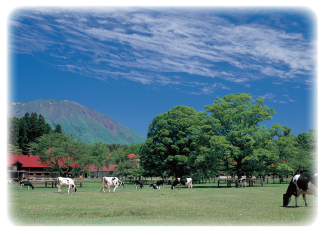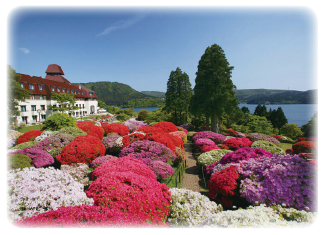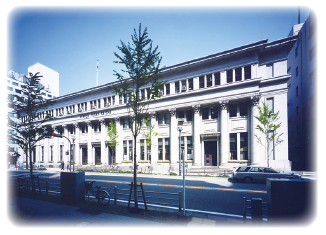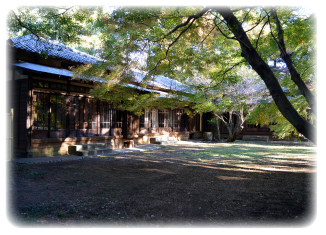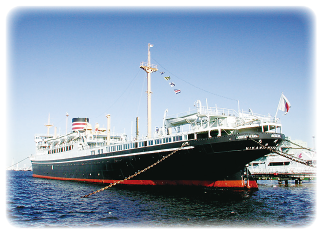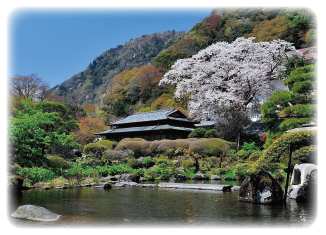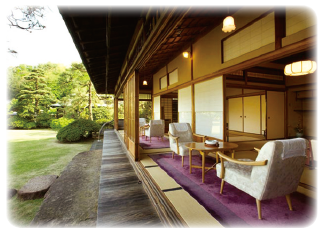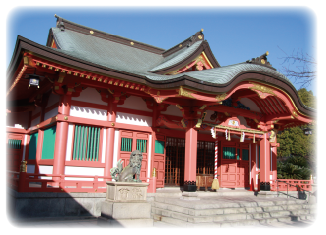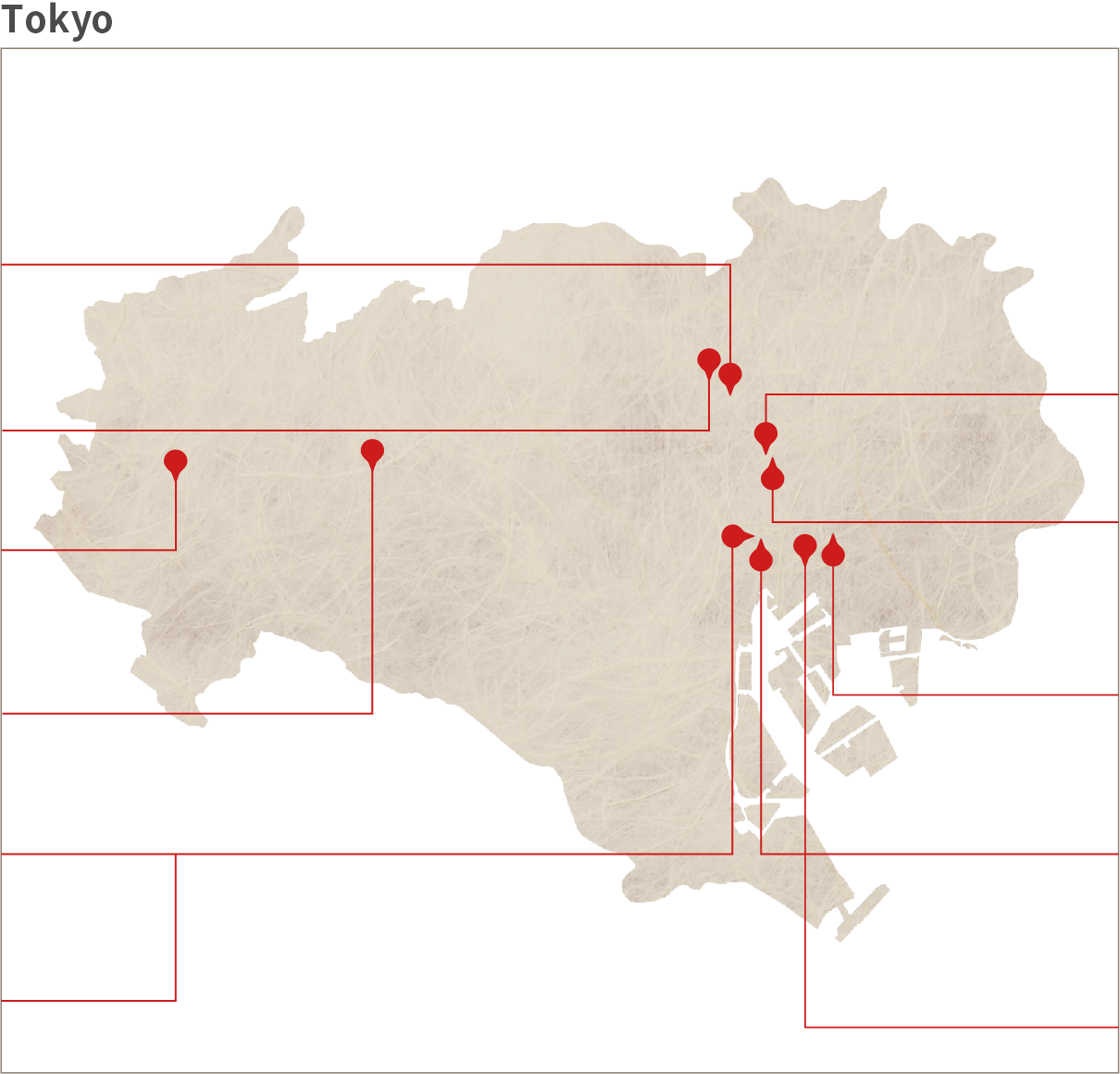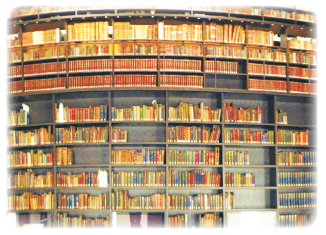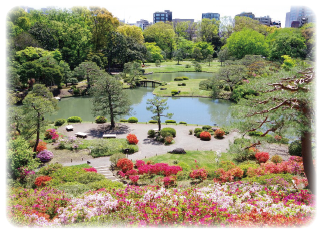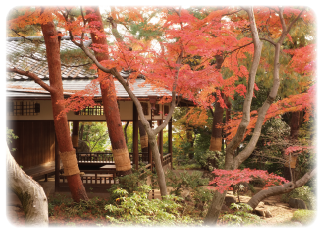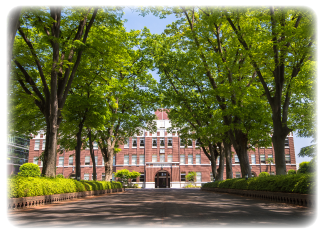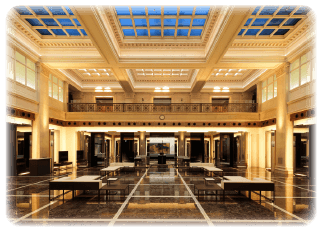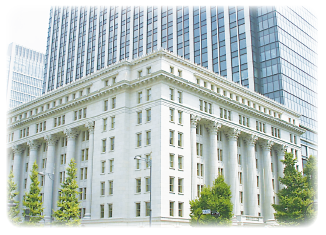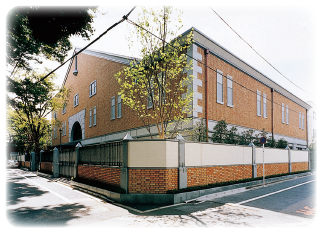
Sites Related to Mitsubishi's History
A Tour of Sites Related to Mitsubishi’s History
The founding family of the former Mitsubishi organization left an impressive legacy of architecture, treasures and landscapes. Here we present a selection that has deep connections with Mitsubishi. As these sites are open to the public, we hope you will use the information to experience Mitsubishi's history and contributions to culture.
Search by name
-
▼
The birthplace of
Yataro Iwasaki

-
▼
Kyu-Iwasaki-tei
Gardens

-
▼
Kyu-Iwasaki Hisaya Suehiro Nojo Bettei Park

-
▼
Former Takeshiro Nagayama Residence and
Former Mitsubishi
Mining Company Dormitory in Sapporo City

-
▼
Kiyosumi Gardens

-
▼
Koiwai Farm

-
▼
Sanyo-so

- ▼ Ikuno Silver Mine
- ▼ Osarizawa Mine
-
▼
Sado Gold Mine

-
▼
Seikado Bunko Art Museum

-
▼
Seikei Gakuen Archives Museum

-
▼
Toyo Bunko

-
▼
Tosa Inari Shrine

-
▼
Tonogayato Gardens

-
▼
NYK Hikawa Maru

-
▼
NYK Maritime
Museum

-
▼
Hakone Yumoto
Yoshiike Ryokan

-
▼
Mitsubishi Ichigokan
Museum, Tokyo

-
▼
Mitsubishi Heavy Industries Nagasaki
Shipyard &
Machinery Works Historical Museum

-
▼
Mitsubishi Merchant Marine School

-
▼
The Mitsubishi Archives (annex to the
Mitsubishi Economic
Research Institute)

-
▼
Meijiseimeikan

-
▼
Hotel de YAMA

-
▼
Rikugien Gardens

Where is the site?
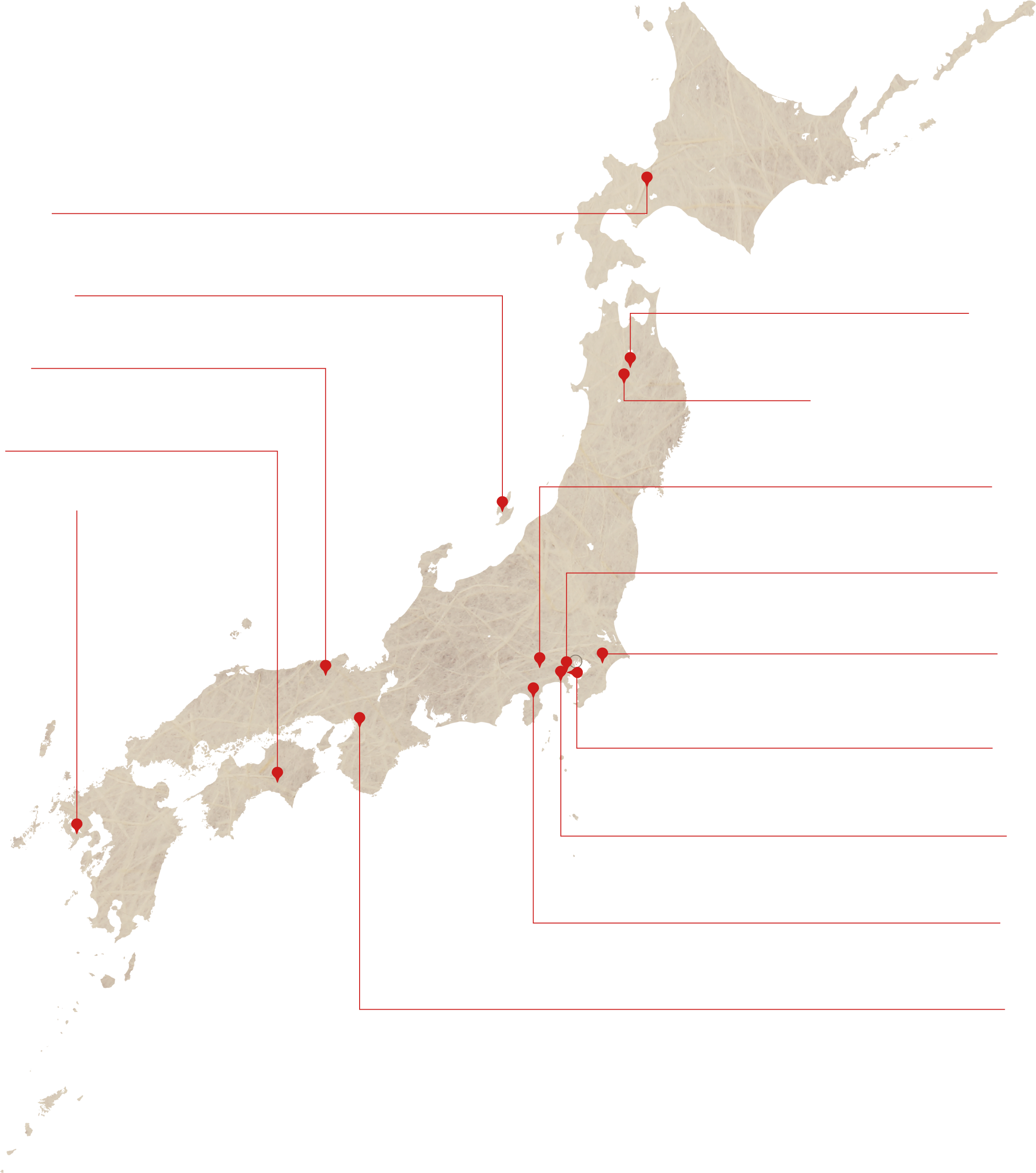
Sites Related to Mitsubishi's History
The beginning of Mitsubishi, the birthplace of Yataro Iwasaki
The birthplace of Yataro Iwasaki
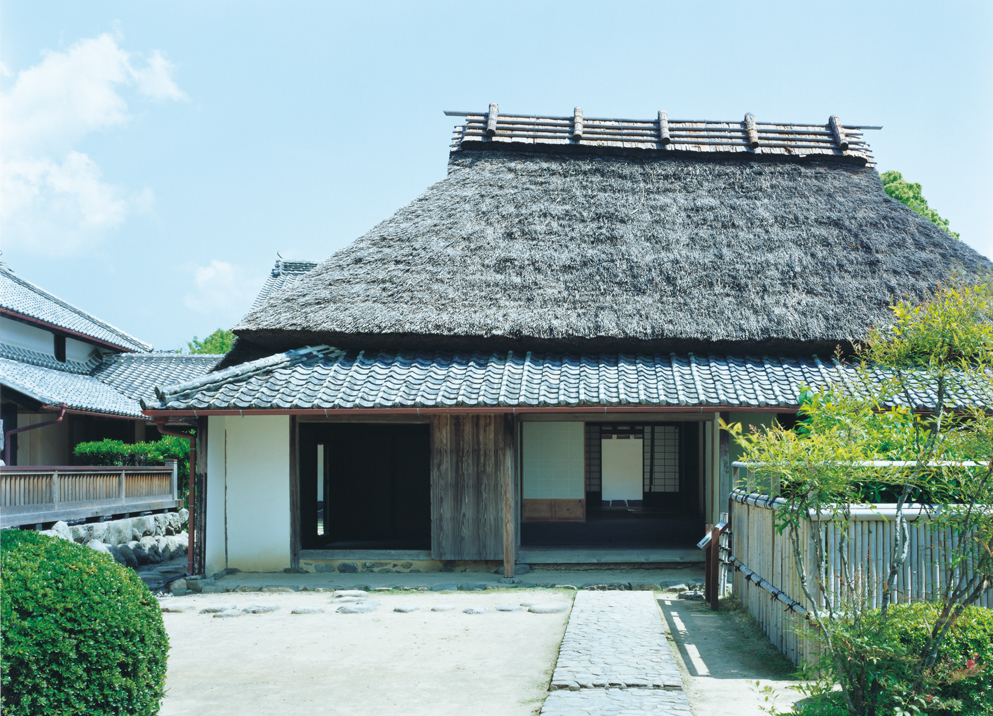
In 1835, Yataro Iwasaki was born here as the eldest son of
Yajiro and Miwa Iwasaki. His brother Yanosuke and eldest son
Hisaya were also born here.
The site is enclosed by a hedge and contains the
thatched cottage that was relocated here around 1795 by
Yataro’s great grandfather and an earthen-walled storehouse
built in the Meiji period. The ornamental tiles of the
storehouse roof display the Iwasaki family crest, a
three-tiered water chestnut design that is the origin of the
three-diamond Mitsubishi symbol. The stones in the inner
garden were arranged by Yataro himself during his youth to
represent the Japanese archipelago. They are thought to
represent the ambitious global dreams of the young man.

▶ Please watch the video
DATA
Location
1696 Inokuchi-ko, Aki-city, Kochi
TEL. +81-887-35-1011
(Department of Commerce, Tourism and Marine Products of
Aki City)
Nearest Station
About 10 minutes by car from Aki Station on the Tosa Kuroshio Railway Gomen Nahari Line
Picturing Hisaya’s life in the stately home of the Iwasaki Family
Kyu-Iwasaki-tei Gardens
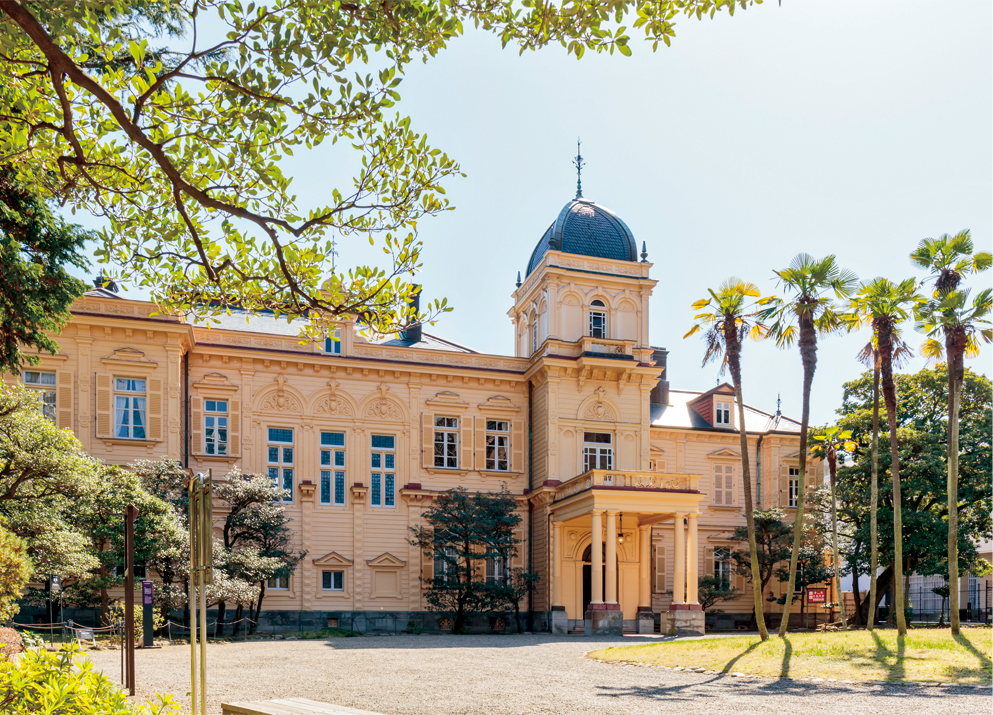
In 1896, Kyu-Iwasaki-tei Gardens was built by Hisaya
Iawsaki, the eldest son of Yataro Iwasaki, as the main
residence of the Iwasaki family.
British architect Josiah Conder, whose work includes
Rokumeikan, designed this mansion for Hisaya Iwasaki.
Although there used to be more than 50 buildings on the site
of about 50,000 m2, only three of them remain
today: the Western-style house, the billiard hall, and the
Japanese-style house.
This style is Jacobian, in the manner of the British
Renaissance, and the interior is highly ornamental. The
delicate design, which was rare in the western architecture
of the time, will transport you back to the early days of
modern Japan.

▶ Please watch the video
DATA
Location
1-3-45 Ikenohata, Taito-ku, Tokyo
TEL. +81-3-3823-8340
9:00–17:00 (Admission ends at 16:30)
Closed: December 29 to January 1
Nearest Station
Yushima Station on Tokyo Metro Chiyoda Line/ Uenohirokoji Station on Tokyo Metro Ginza Line/ Ueno-Okachimachi Station on Toei Subway Oedo Line/ Okachimachi Station on JR Yamanote Line
▶Official web siteSite of Hisaya’s Passing Which Became a Place for Modern Agricultural Practices
Kyu-Iwasaki Hisaya Suehiro Nojo Bettei Park
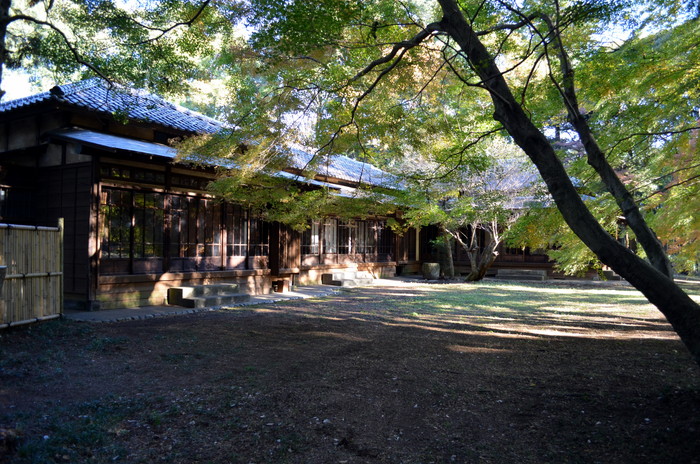
Main building of Suehiro Villa: Registered as a national cultural property as valuable villa architecture from the early Showa period (1926 to 1989)
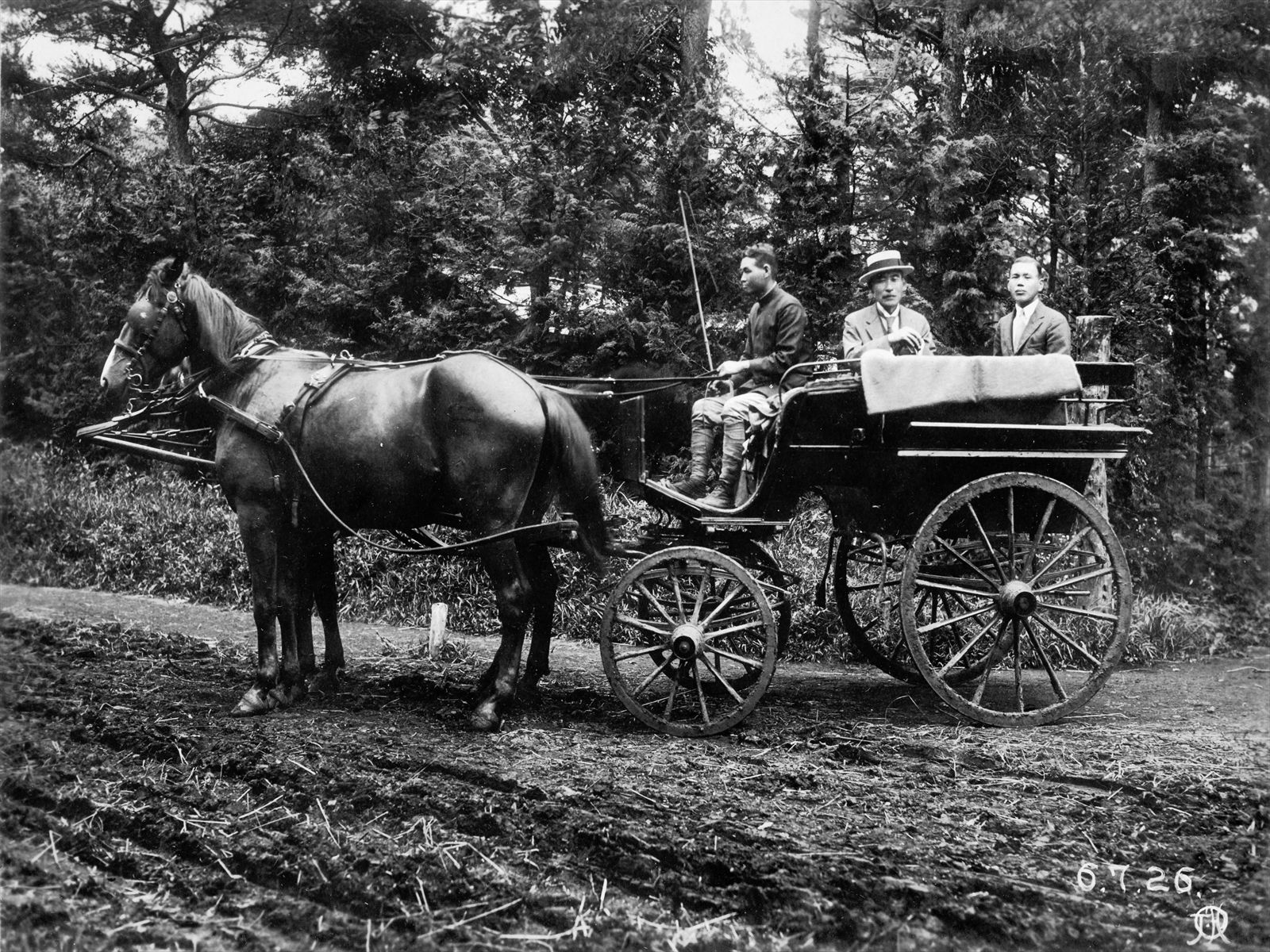
Hisaya and Tachibana, the Farm Manager, riding a horse-drawn carriage (photo courtesy of the Tachibana Family)
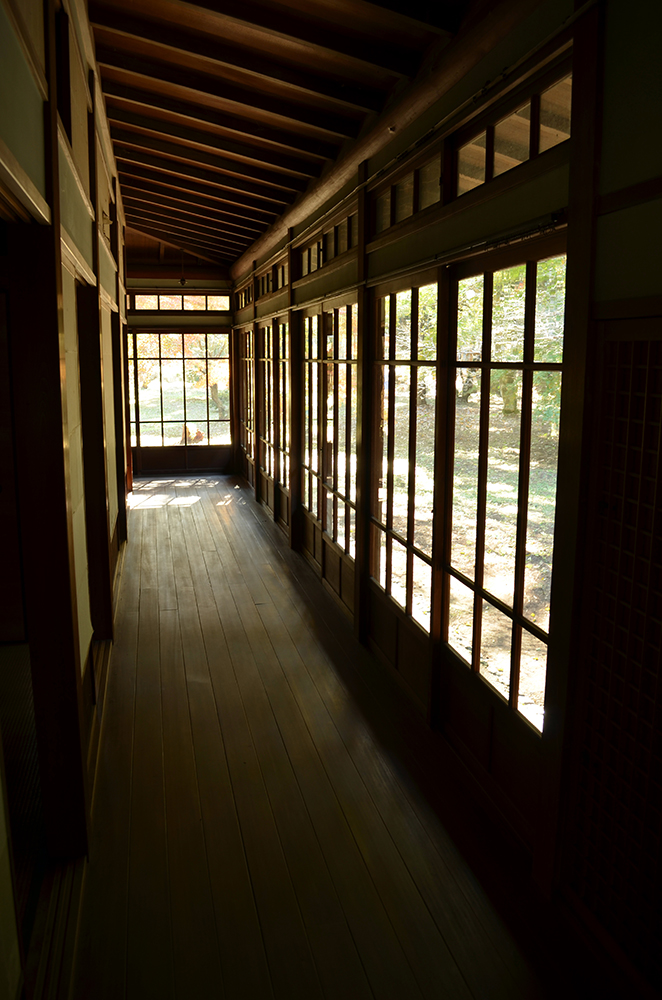
Many glazed sliding doors have been used to brighten the interior of the main building
Hisaya Iwasaki, who became Mitsubishi’s third President in 1893,
promoted the diversification of business into mining, finance and shipbuilding.
After retiring as President in 1916, he then focused his efforts on the business of
raising crops and livestock that he had long wanted to pursue.
Along with Koiwai Farm located at the foot of Mt. Iwate in Iwate Prefecture,
Suehiro Farm, established in what is now Tomisato, was the place where he put that
into practice.
The name of Suehiro Farm is derived from the fact the farmland has a shape which
spreads
out (suehiro in Japanese) like a fan. In addition to free-range chicken
and pig
farming, this farm also produced agricultural products including ham and bacon.
Hisaya contributed to the modernization of the agricultural and livestock industry
in Japan through experimental endeavors such as establishing cultivation methods to
increase the yield of soybeans and cultivating Tomisato’s famous watermelon seed
stock. The story of Hisaya building a villa on the farm and personally taking care
of the chickens and weeding the land conveys to this day his unaffecting personality
and deep feelings toward the agricultural and livestock industry.
The history of Suehiro Farm came to an end after over 30 years with the
liberation of agricultural land after World War II. Hisaya moved to Suehiro Villa in
1949. However, he soon fell ill. After undergoing medical treatment, he passed away
at the age of 90 on December 2, 1955.
Suehiro Villa, the site where Hisaya passed away, has been preserved in the
style it was at that time. Restoration work is currently underway with the aim of
opening it to the general public from 2025. Across from the villa is Suehiro Farm.
This is now a tourist facility which sells Tomisato’s agricultural products and
products from areas related to the Iwasaki Family. An exhibition area has been set
up in one section of the facility to tell the history of Suehiro Farm.

▶ Please watch the video
DATA
Location
650-25 Nanae, Tomisato-shi, Chiba
- TEL.
-
+81-476-92-1211 (Central Community Center) / +81-476-92-1211 (Social
Education Group)
+81-476-93-7641 (Cultural Resource Utilization Group) / +81-476-92-1597 (Sports Promotion Group)
Opening hours: 10 a.m. to 4 p.m. (last entry: 3:30 p.m.)
Closed: Mondays (next weekday if that is a public holiday) and year-end and New
Year
Holidays
Admission fee: Free
For Those Coming by Car
・From the Sakura area: Turn left at the Nanae Suehirominami intersection on
National Route 296
・From the Shibayama area: Turn right on the Nanae Suehirominami intersection on
National Route 296
*Please set your car navigation system to “650-25 Nanae, Tomisato City” as the
address of Suehiro Villa.
For Those Coming by Train and Bus
Take the Chiba Kotsu Honjodai Route (Route 5) bus departing from the Central Exit of Keisei Narita Station on the Keisei Main Line and then walk for 10 minutes after getting off at the Suehiro bus stop.
▶Official web site (Japanese version site only)A space where you can experience both the Meiji and Showa eras
Former Takeshiro Nagayama Residence and Former Mitsubishi Mining Company Dormitory in Sapporo City
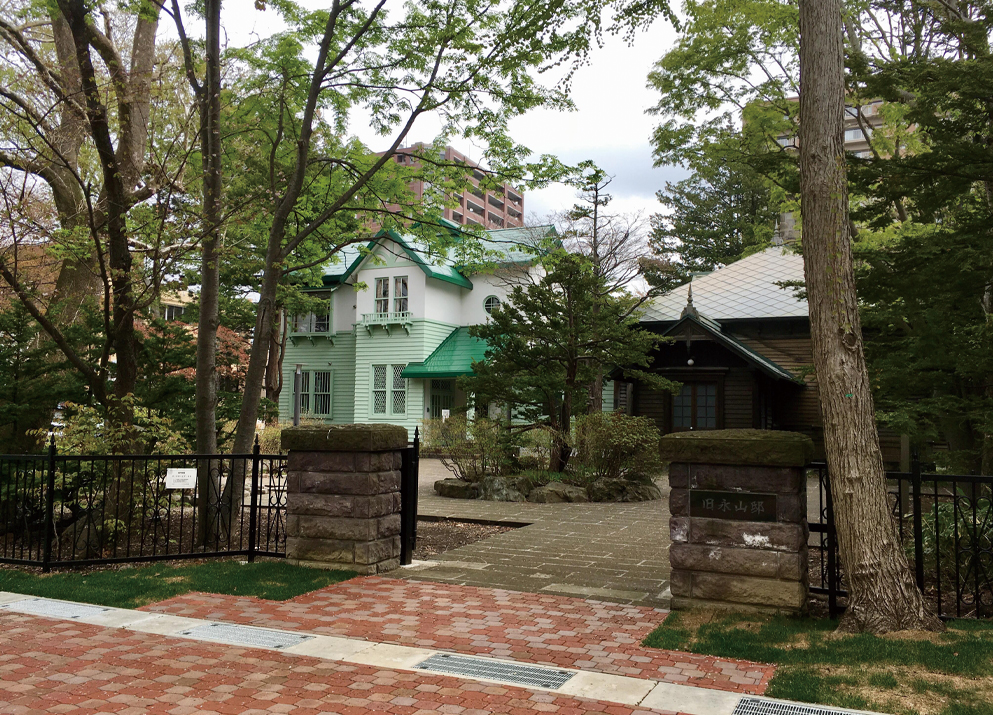
The former Takeshiro Nagayama Residence was built by
Takeshiro Nagayama as a private residence around 1880 during
his tenure as director of the Tonden Army Headquarters. In
1911, the Mitsubishi Joint Stock Company acquired the site
and built the Mitsubishi Mining Company Dormitory on it in
1937.
The former Takeshiro Nagayama Residence and former
Mitsubishi Mining Company Dormitory showcase the styles of
the early Meiji and Showa periods, giving this fusion a high
architectural value.
The Former Takeshiro Nagayama Residence became a Tangible
Cultural Property of Hokkaido in 1987, after ownership of
the building was transferred to Sapporo City in 1985. The
Former Mitsubishi Mining Company Dormitory became a Tangible
Cultural Property of Japan in 2019.
DATA
Location
Kita 2-jo Higashi 6-chome, Chuo-ku, Sapporo-city,
Hokkaido
Hours: 9:00–22:00
Closed: Second Wednesday of every month (except when the
Wednesday is a national holiday, in which case it closes
on the following day) and New Year’s holidays
A sublime garden of the Meiji era visited by many people
Kiyosumi Gardens
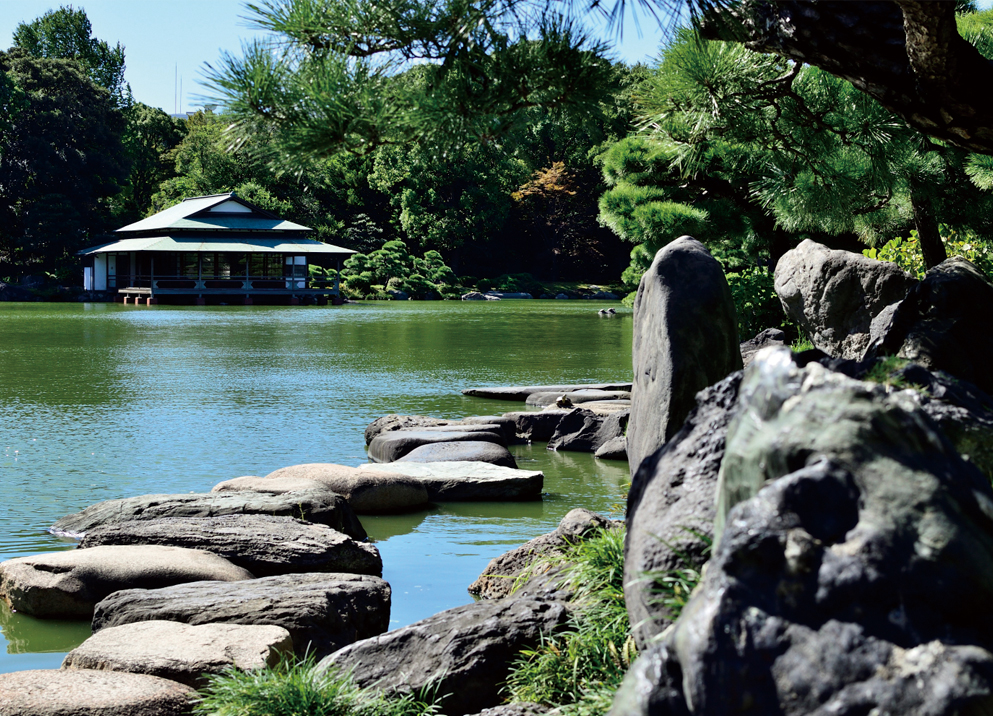
In 1878, Yataro Iwasaki purchased the estate grounds of a
daimyo of the Edo era to provide his workers and noble
guests with a place for recreation. The landscaping work
continued after his death, and it was completed as a sublime
garden with a central pond surrounded by well-maintained
paths and trees where people could enjoy a stroll. Although
it suffered great damage in the Great Kanto Earthquake, the
garden helped save a number of lives as it was used as an
evacuation point.
Yataro’s heirs donated it to the City of Tokyo in the
following year of 1924. It reopened as Kiyosumi Gardens in
1932.
DATA
Location
3-3-9 Kiyosumi, Koto-ku, Tokyo
TEL. +81-3-3641-5892
Hours: 9:00–17:00 (Entry permitted until 16:30)
Closed: December 29 until January 1
Nearest Station
Kiyosumi-shirakawa Station on the Toei Subway Oedo Line or the Tokyo Metro Hanzomon Line
▶Official web siteLearn about dairy farming and forestry alongside history
Koiwai Farm
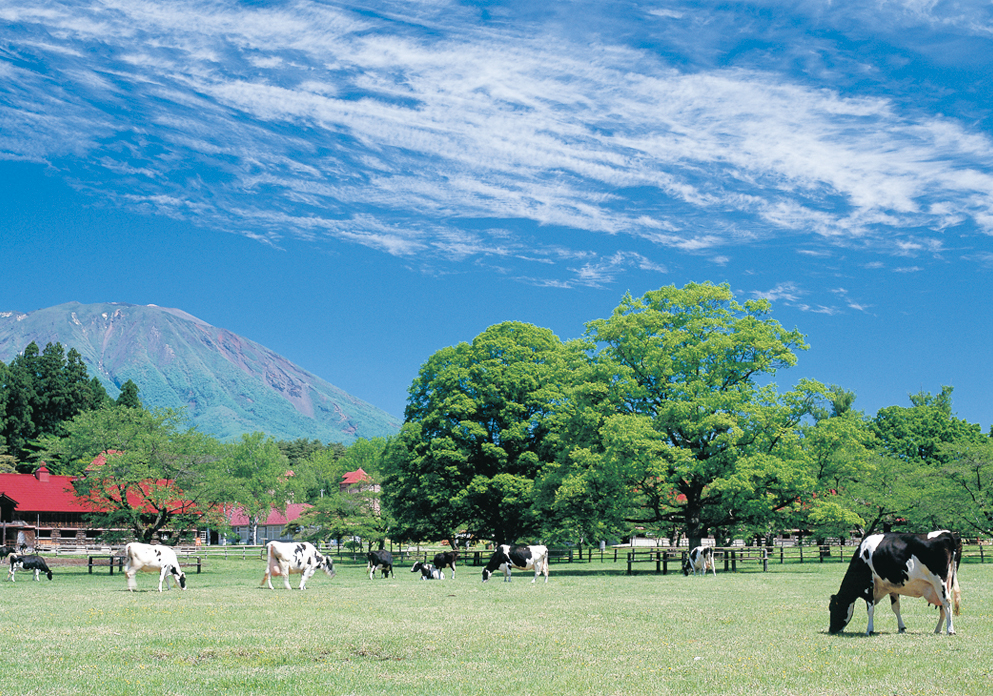
Koiwai Farm was named using the first kanji syllable in each
of the family names of its co-founders: Gishin Ono (then
vice president of Japan Railway—with “O” read as “Ko”),
Yanosuke Iwasaki (then president of Mitsubishi), and Masaru
Inoue (then Director General of the Railway Agency). Many
decades were spent on the foundation as the ground was
acidic and extremely sterile as of its opening in 1891.
Today, the site is extremely fertile.
The farm also runs participative programs to help
promote interest and understanding of dairy farming and
forestry through tours of its production sites and historic
buildings designated as important cultural properties.

▶ Please watch the video
DATA
Location
36-1 Maruyachi, Shizukuishi-cho, Iwate-gun, Iwate
TEL. +81-19-692-4321
Nearest Station
Morioka Station on the JR Tohoku or Akita Shinkansen Lines, Tohoku Main Line, Yamada Line,Tazawako Line and the Iwate Ginga Railway Line, Buses depart the station bound for Koiwai No-jo Makiba-en or Amihari Onsen/ From Tohoku Expressway, take the Morioka IC and drive 12 km to Makiba-en
▶Official web siteA restful stay at the former villa of our ex-president Hisaya
Sanyo-so
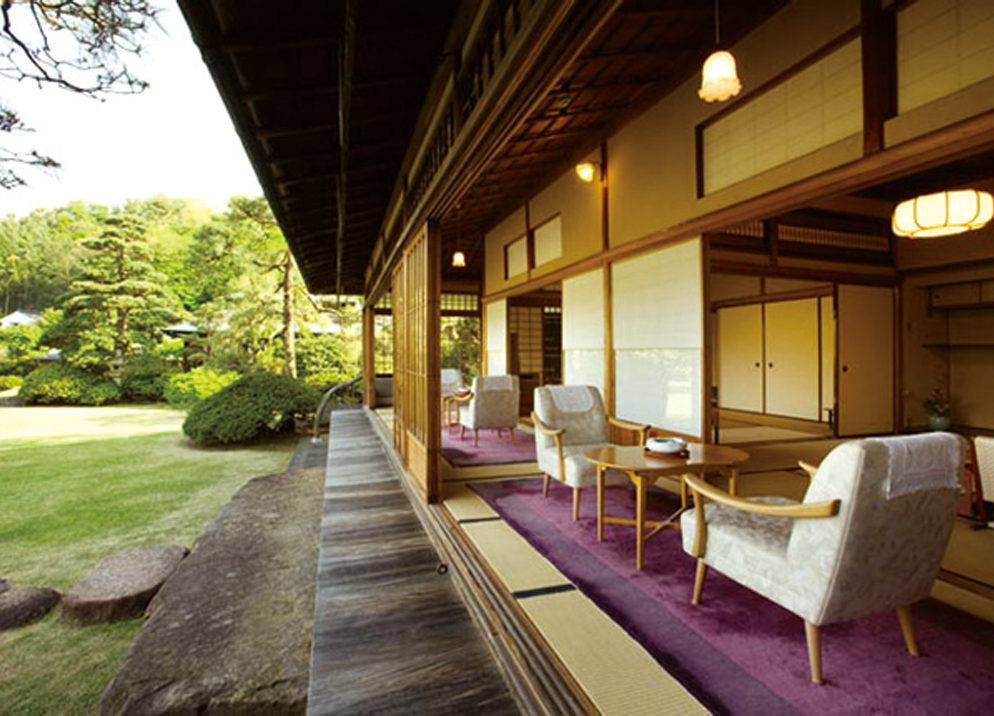
Sanyo-so is an elegant Japanese-style villa constructed for
Hisaya Iwasaki in the middle of an expansive garden designed
by Kyoto-based gardener Jihei Ogawa.
The estate was converted to a hotel in 1947, and it
still offers a great view of the 10,000 m2
garden. Registered as a national tangible cultural property
in June 2017.
DATA
Location
270 Mamanoue, Izunokuni-city, Shizuoka
TEL. +81-55-947-1111
A mine that supported the modernization of Japan revived as a sightseeing attraction
Ikuno Silver Mine
Said to have been discovered in 807, the great Ikuno Silver Mine was active through the Oda, Toyotomi, and Tokugawa periods, and along with the Sado Gold Mine supported the modernization of Japan. By the time of its closure in 1973, it had yielded 1,723 tons of silver. Mitsubishi Materials Corporation keeps the site open as a sightseeing tunnel. In 2017, the remains were recognized as a cultural asset comprising the Japan heritage “Gin-no-Bashamichi” (Old Silver Mine Carriage Road).
DATA
Location
33-5 Kono, Ikuno-cho, Asago-city, Hyogo
TEL. +81-79-679-2010
A Tohoku mine that yielded gold, silver, and copper for 1,270 years
Osarizawa Mine
The Osarizawa Mine is said to have been discovered in 708. Mitsubishi obtained the mine in 1889. The mine produced 4.4 tons of gold, 155 tons of silver and 300,000 tons of copper until its closure in 1978. Mitsubishi Materials Corporation keeps the site open as a sightseeing tunnel.
DATA
Location
13-5 Shishizawa Osarizawa, Kazuno-city, Akita
TEL. +81-186-22-0123
A major gold mine that is a candidate World Heritage Site
Sado Gold Mine
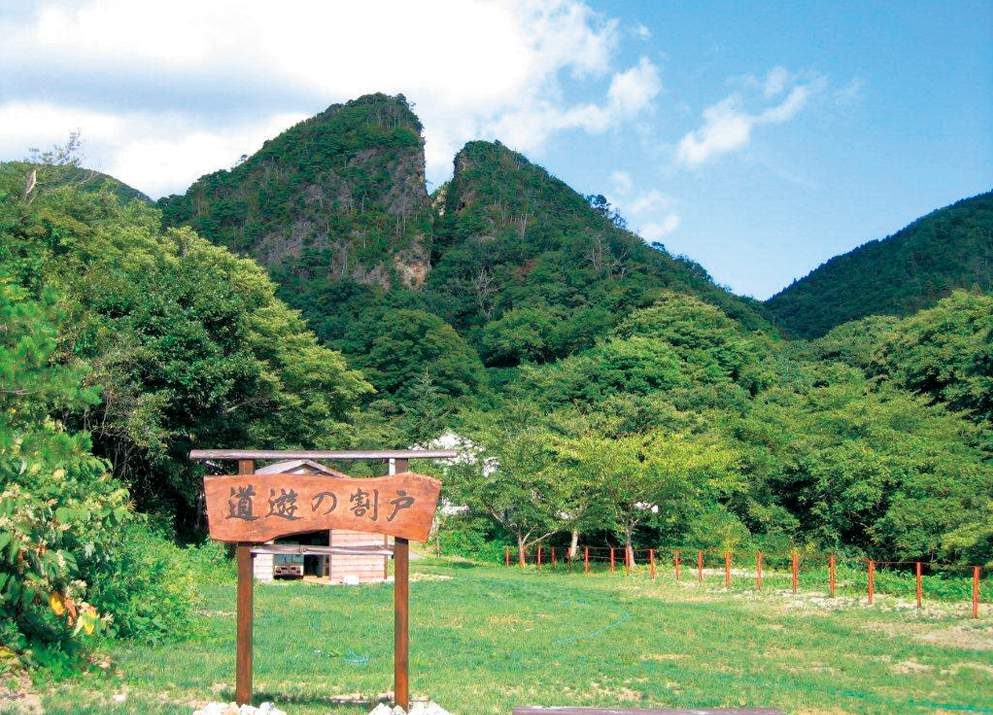
The Sado Gold Mine is a major gold and silver mine that was developed following the discovery of gold in 1601. After supporting the treasuries of the Edo and Meiji governments, it became a royal property in 1889 along with the Ikuno Silver Mine until it was sold to Mitsubishi Joint Stock Company in 1896. The Sado Gold Mine remained under the management of Mitsubishi Mining Co., Ltd. (now Mitsubishi Materials Corporation) until its closure in 1989. Total gold production was 78 tons and silver production was 2,330 tons respectively over 388 years. The mine is now open to the public for sightseeing, and Mitsubishi is working alongside the local government to have it appointed as a World Heritage Site.
DATA
Location
1305 Shimo-Aikawa, Sado-city, Niigata
TEL. +81-259-74-2389
A treasure house of Far Eastern antiques and old classic books
Seikado Bunko Art Museum
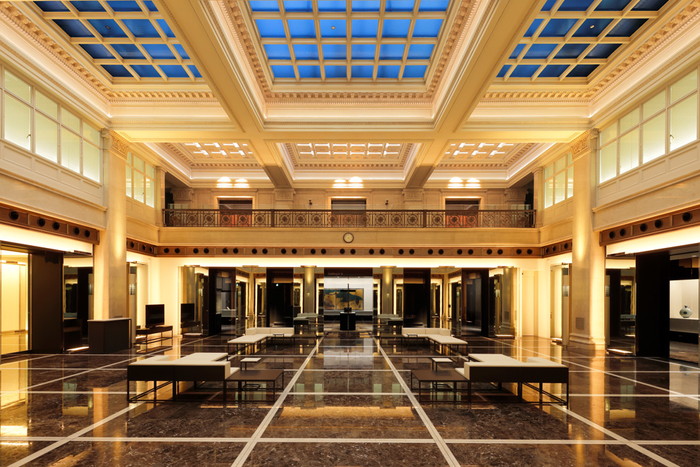
Foyer of Seikado Bunko Art Museum
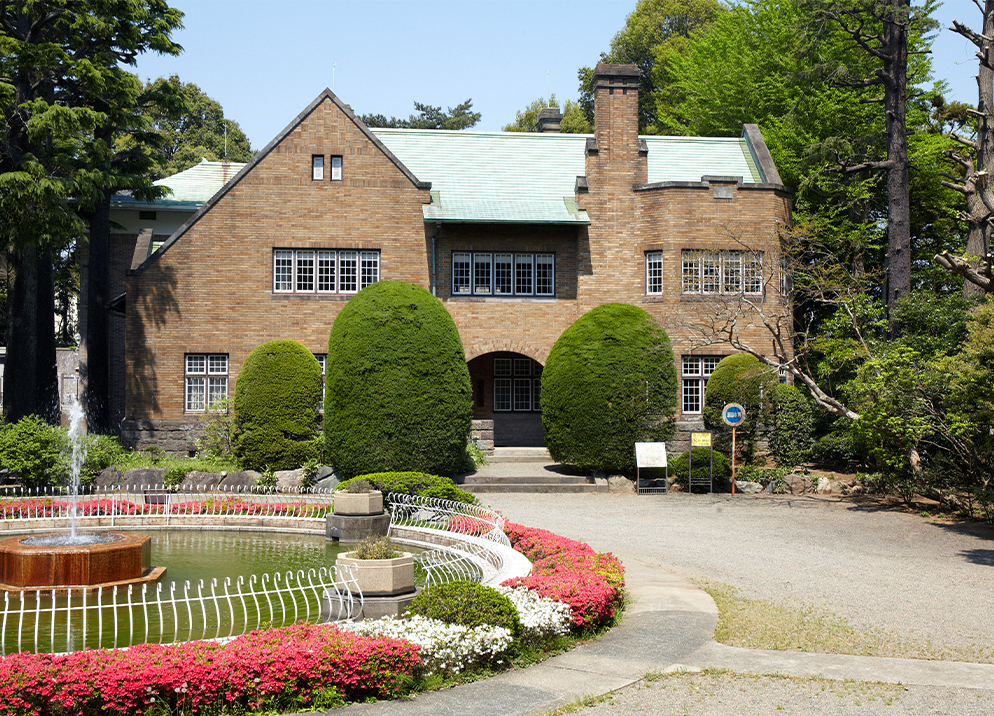
Front view of Seikado Bunko Library. The building was selected as an important historical building by the Tokyo Metropolitan government.
Fearing the loss of cultural properties distinctive of the Orient that tended to be dismissed in the
Meiji period (1868
to 1912) when there was bias toward Western culture, Yanosuke Iwasaki began collecting pieces in
earnest around 1887 for
the Seikado. Koyata, Yanosuke Iwasaki’s eldest son, then further expanded this collection. The Seikado
is home to more
than 6,500 ancient Oriental artworks, including seven national treasures and 84 important cultural
properties, and about
200,000 valuable old Chinese and Japanese books and documents.
These works of arts were opened to the public in 1977. Seikado Bunko Art Museum was then
opened to commemorate the 100th anniversary of the founding of the Seikado in 1992. The art museum’s
exhibition gallery
was moved to the first floor of Meiji Seimei Kan in Marunouchi in October 2022 when the 30th
anniversary of
Seikado Bunko Art Museum was celebrated. It is open to the public with the nickname as
Seikado@Marunouchi.
The Seikado Bunko Library was established in the Iwasaki Family residence in Surugadai at first.
Currently, it continues
to operate in Setagaya Okamoto as a special library.
DATA
Location
1F Meiji Seimeikan, 2-1-1 Marunouchi, Chiyoda-ku, Tokyo
TEL. 050-5541-8600 (Hello Dial information service)
Opening hours: 10 a.m. to 5 p.m.
Please check the official website for the nighttime opening hours.
Admission until 30 minutes before closing.
Closed: Mondays (open on public holidays and then closed the next weekday), exhibition
changeover periods, and the year-end and New Year’s holidays
Admission fee
Adults : 1500 yen
Students[High school student or above]: 1000 yen
Persons with disabilities : 700 yen [Including free entry for one accompanying person]
Nearest Station
From JR Tokyo Station, leave through the Marunouchi South Exit, then walk 5 minutes. From JR Yurakucho Station, leave through the International Forum Exit, then walk 5 minutes. Take the Chiyoda Subway Line to Nijubashimae Station. We are located at Exit 3.
▶Official web siteTracing the Path of the Friendship between Koyata Iwasaki and Seikei Gakuen’s Founder Haruji Nakamura
Seikei Gakuen Archives Museum
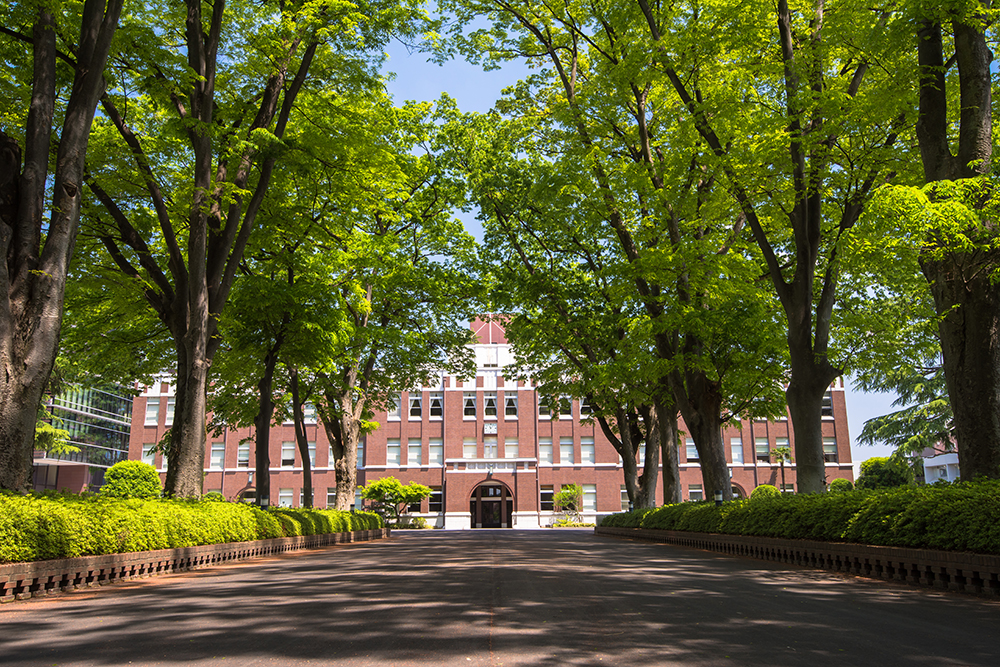
Current school building of Gakuen
Panoramic view of Seikei Jitsumu Gakko as drawn by Haruji Nakamura
Panoramic view of Seikei Jitsumu Gakko as drawn by Haruji Nakamura
Koyata Iwasaki, born the eldest son of his father Yanosuke who was the second president of Mitsubishi, met Haruji Nakamura, who later become the founder of Seikei Gakuen, and Shigezo Imamura, who became a banker, in their junior high school days. They then went on to develop a life-long friendship. Together with Imamura, Iwasaki provided his assistance when Nakamura established Seikei Gakuen. He then continued to support the management foundations of Seikei Gakuen such as by taking up the post Chairman of the Board of Seikei Gakuen. The Seikei Gakuen Archives Museum conveys the more than 100-year history of Seikei Gakuen that was born from the friendship of those men, the institution’s original educational philosophy and the state of its practices. It does this through exhibits which incorporate a wealth of videos and images using a 120-inch large screen, dioramas and Haruji Nakamura’s natural voice.
DATA
Location
3-3-1 Kichijoji-Kitamachi, Musashino-shi, Tokyo
TEL. +81-422-37-3994
E-mail: archives@jim.seikei.ac.jp
Opening hours: 9:30 a.m. to 4:30 p.m.
Closed: Saturdays, Sundays, public holidays and school-designated holidays
Nearest Station
After getting off at Kichijoji Station on the JR Chuo Line, Sobu Line and Keio
Inokashira Line walk for approximately 15 minutes or take KANTO Bus from Bus
Boarding Points 1 and 2 at the North Exit of Kichijoji Station for approximately
5 minutes to Seikei Gakuen-mae.
Take KANTO Bus (bound for Kichijoji Station) for approximately 15 minutes from
the South Exit of Seibu-Yagisawa Station on the Seibu Shinjuku Line for
approximately 15 minutes to Seikei Gakuen-mae.
A million books saved through Hisaya’s contribution to cultural development
Toyo Bunko
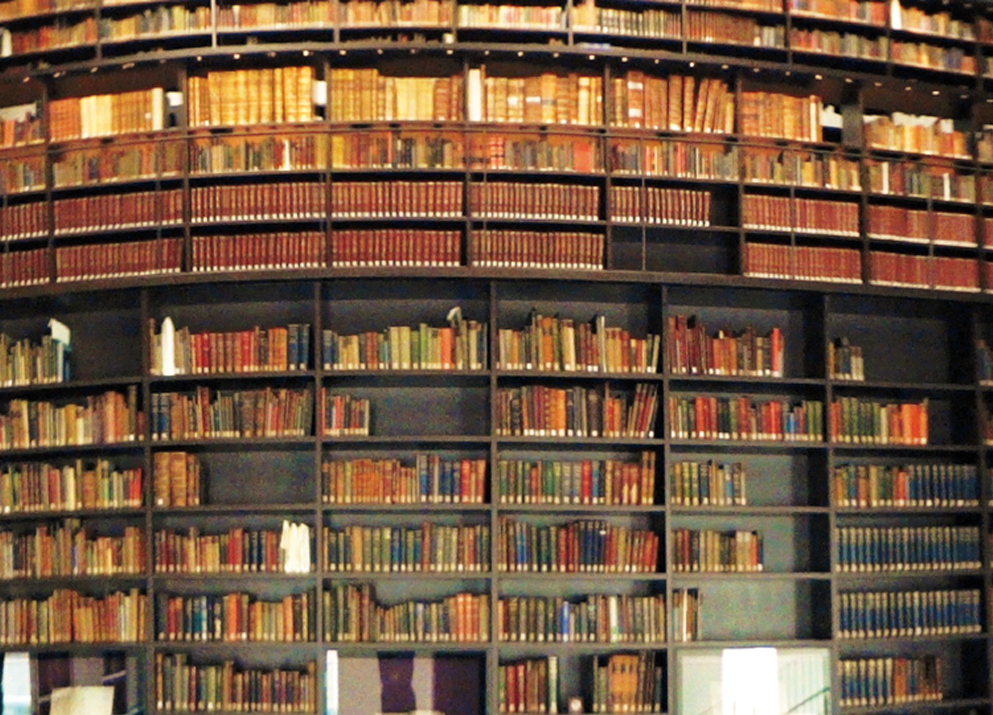
“Morrison’s Stacks” on the second floor of the museum
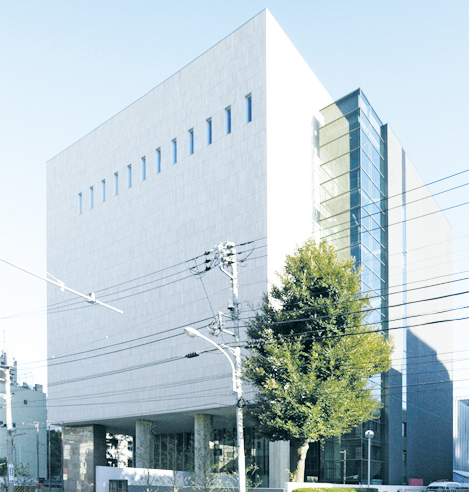
Exterior view of Toyo Bunko
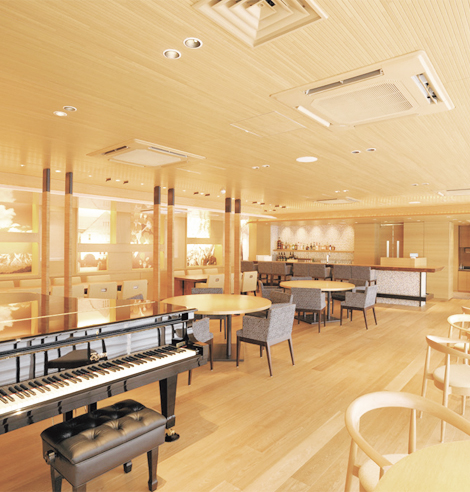
Restaurant “Orient Café”
Toyo Bunko is located along Shinobazu-dori in Bunkyo-ku,
Tokyo. In 1917, Hisaya Iwasaki purchased the private library
of George Ernest Morrison, an advisor to the Office of the
Chinese Government. He built on this collection by adding
classical Chinese and Japanese books collected from all over
Asia. In 1924, he established the center as Japan’s first
library devoted exclusively to Asian Studies. Toyo Bunko
currently houses around one million books and materials in
Japanese, Chinese, and various other Asian languages,
including five works designated as national treasures and
seven works designated as important cultural properties.
Toyo Bunko is an important center for Asian studies in Japan
and globally.
A museum has been established to house these valuable
books and promote Asian studies. Using the latest digital
technologies and architecturally-designed spaces, it
displays a long-hidden collection of rare books and
pictures, with an emphasis on works designated as national
treasures or important cultural properties. Visitors can
also refresh themselves at the on-site restaurant Orient
Café, which is operated and directly supplied by Koiwai
Farm.
DATA
Location
2-28-21 Honkomagome, Bunkyo-ku, Tokyo
TEL. (Reading room) +81-3-3942-0122
(Museum) +81-3-3942-0280
(Orient Café) +81-3-3942-0400
- Reading Room
-
10:00–16:00
*This room is available for use by prior arrangement only
Closed: Tuesdays, Sundays, national holidays, and New Year’s holidays
No admission fee
- Museum
-
10:00–17:00
Closed: Tuesdays (except when the Tuesday is a national holiday, in which case it closes on the following weekday)
Admission fee is ¥900 (discounts apply; free for club members)
- Orient Café
-
11:30–21:00
Same holidays as the museum
Nearest Station
8 min. walk from Komagome Station on JR Yamanote Line or subway Nanboku Line/ 7 min. walk from Sengoku Station on Toei Subway Mita Line/ 1 min. walk from Kamifujimae bus stop
▶Official web siteLectures on Asian studies, a tradition since 1926, are offered biannually in spring and autumn.
The shrine housing Mitsubishi’s guardian spirit
Tosa Inari Shrine
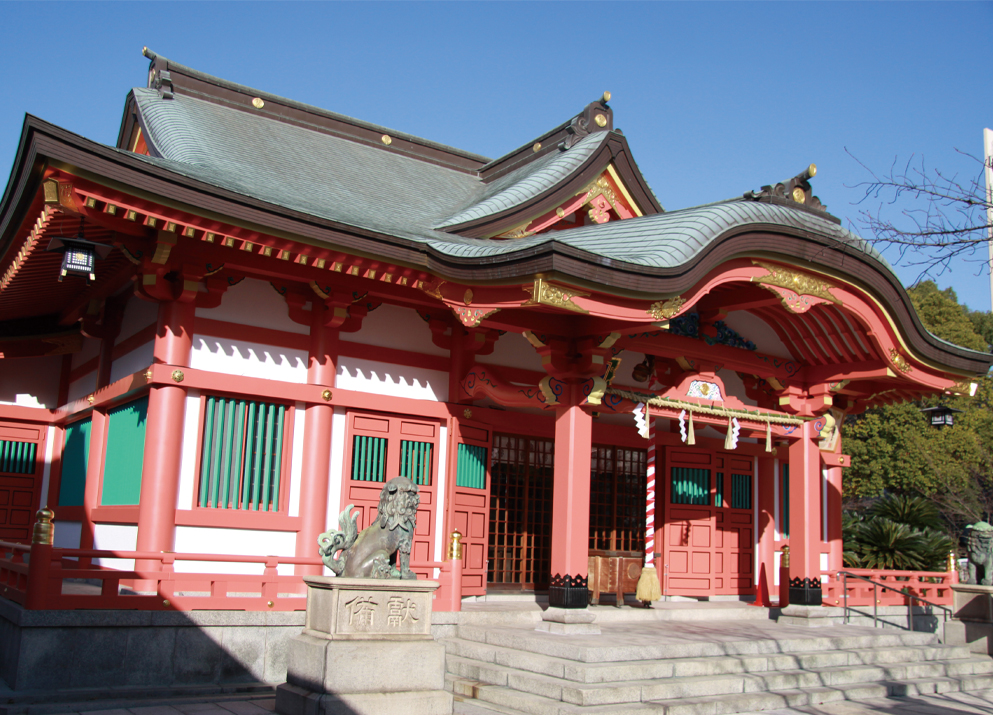
The Tosa Inari Shrine was established in the middle of the Edo period when Toyotaka Yamauchi, the leader of the Tosa Domain, built the western storehouse of the Tosa Domain’s Osaka headquarters as an Inari shrine. It became the property of Yataro Iwasaki in the Meiji period, and the family was so devoted to the shrine that it was said to house the guardian spirit of Mitsubishi. This is also the location where Tsukumo Shokai, the original Mitsubishi company, was established.

▶ Please watch the video
DATA
Location
4-9-7 Kita-Horie, Nishi-ku, Osaka-city, Osaka
TEL. +81-6-6531-2826
Nearest Station
Nishi Nagahori Station on the Osaka Municipal Subway Sennichimae Line/ Nagahori-Tsurumi-Ryokichi Line
A historic garden that takes advantage of the natural topography of Musashino
Tonogayato Gardens
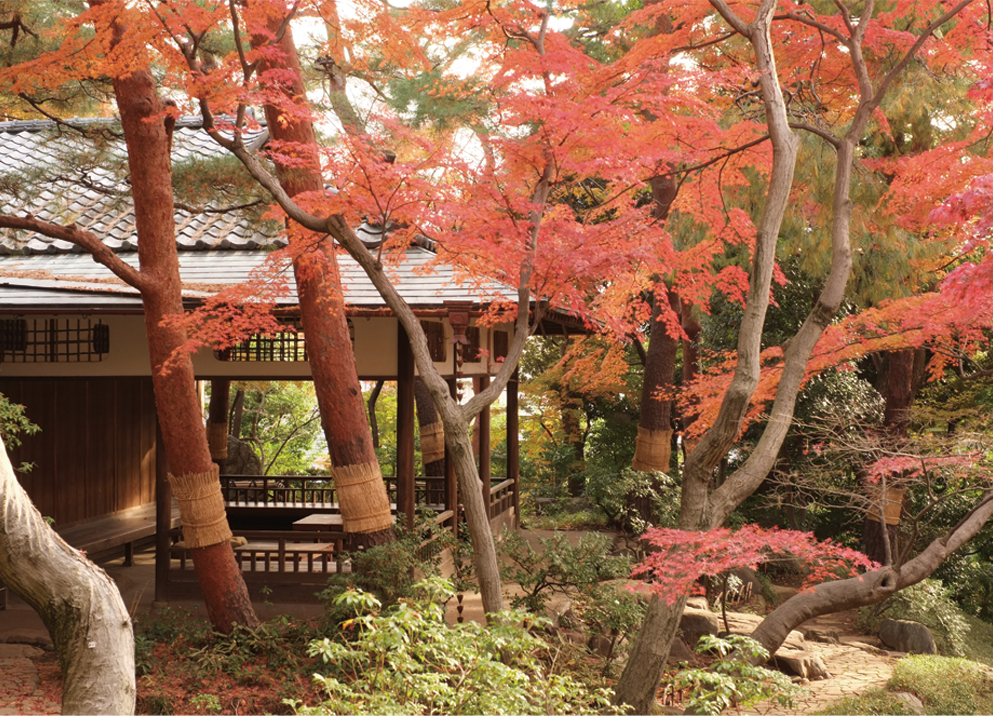
This garden was originally founded as a villa for Sadae
Eguchi, who later became president of South Manchuria
Railways Co. The Iwasaki family purchased the villa from him
in 1929 and commissioned Saku Tsuda to redesign an existing
main building and to design an additional tea-ceremony house
(Koyotei). This is how Tonogayato Gardens was completed.
The garden also features a pond and roaming paths,
taking advantage of the natural topography of Musashino. It
is now owned by the Tokyo Metropolitan Government and open
to the general public.
DATA
Location
2-16 Minami-machi, Kokubunji-city, Tokyo
TEL. +81-42-324-7991
Hours: 9:00–17:00 (Entry permitted until 16:30)
Closed: December 29 until January 1
Nearest Station
Kokubunji station on JR Chuo Line or Seibu Kokubunji Line or Seibu Tamako Line (2 minutes on foot)
▶Official web siteBack to the golden days of cargo-passenger ships
NYK Hikawa Maru
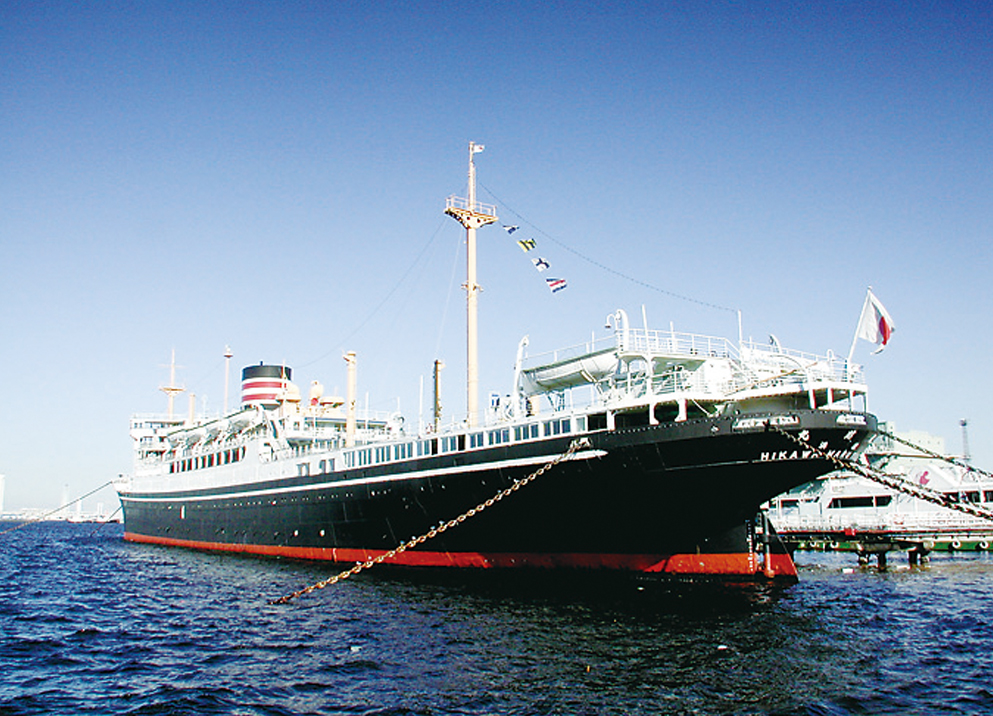
Hikawa Maru is a cargo-passenger ship that was built in 1930
to service the shipping route to Seattle. It was a
state-of-the-art ship at that time, and is a reminder of the
age of luxury passenger liners prior to World War II. During
the war, Hikawa Maru served as a hospital ship, and was
moored at a special pier in Yamashita Park in Yokohama in
1961. Open to the public, in 2016 it was designated as a
nationally important cultural property.
The ship is a beloved symbol of Yokohama, and is
highly regarded as a precious part of Japan’s industrial
heritage.
DATA
Location
Yamashita Park, Yamashita-cho, Naka-ku, Yokohama-city,
Kanagawa
TEL. +81-45-641-4362
Hours: 10:00–17:00
Closed: Mondays. May be closed as necessary on an ad hoc
basis.
Contributing to the modernization of Japan’s maritime transport
NYK Maritime Museum
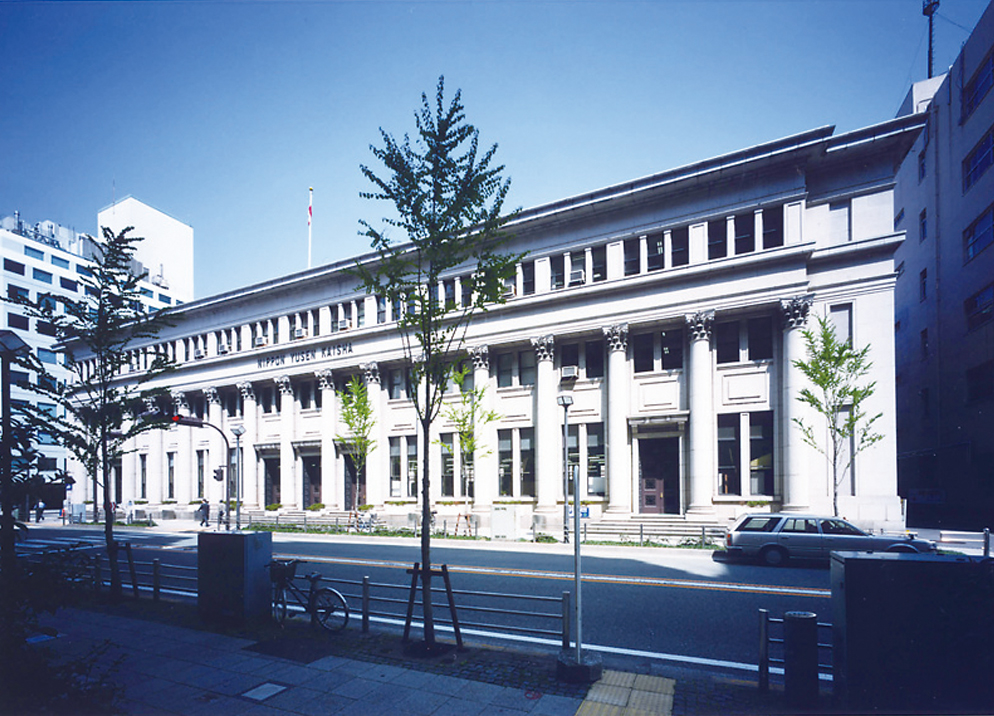
The NYK Maritime Museum introduces more than 130 years of Nippon Yusen Kaisha’s history, from the company’s secret origin to its activities in the modern era. Museum exhibits feature extensive resources such as ship models, important documents, and beautifully printed pamphlets from passenger ships. The historic museum building was originally built as the Yokohama branch of NYK in 1936 and has distinctive Corinthian columns reaching up to the top of the second floor.
DATA
Location
3-9, Kaigan-Dori, Naka-ku, Yokohama-city, Kanagawa
TEL. +81-45-211-1923
Hours: 10:00–17:00
Closed: Mondays, New Year’s holidays, and may be closed as
necessary on an ad hoc basis.
Nearest Station
Bashamichi Station on the Minato Mirai Line Kannai and Sakuragicho Station on the JR Keihin-Tohoku Line and Negishi Line
▶Official web siteRelax and enjoy the fabulous view of the changing seasons in a 33,000 m2 garden
Hakone Yumoto Yoshiike Ryokan
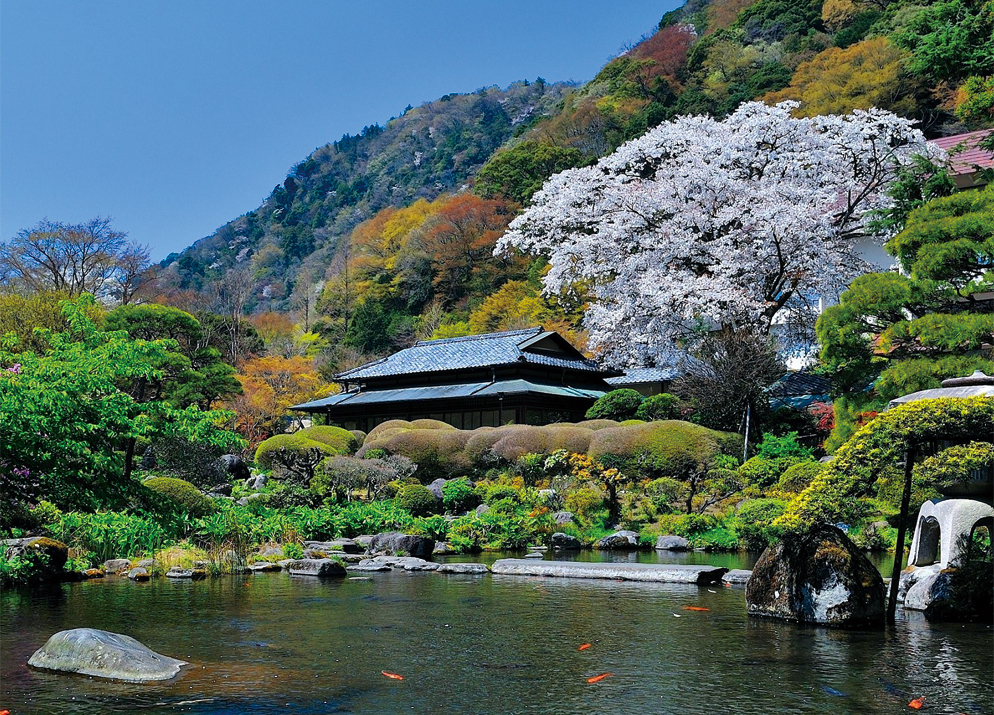
Situated in one corner of an impressive 33,000 m2 garden, this nationally registered cultural property is a former villa of the Iwasaki family estate and is surrounded by spectacular scenery. Now run as a Yoshiike Ryokan Hotel (established in 1941), it offers visitors a chance to ramble along the paths of the landscaped garden, which was completed in 1908, enjoy the cherry blossoms, azalea, and calla lilies in spring, hydrangeas in summer, and colored leaves in autumn.
DATA
Location
597 Yumoto, Hakone-machi, Ashigarashimo-gun, Kanagawa
TEL. +81-460-85-5711
Nearest Station
Hakone Yumoto station on Hakone Tozan Railway
▶Official web site (Japanese version site only)Recreation of Mitsubishi Ichigokan in the center of Tokyo
Art Museum in Marunouchi Mitsubishi Ichigokan Museum, Tokyo
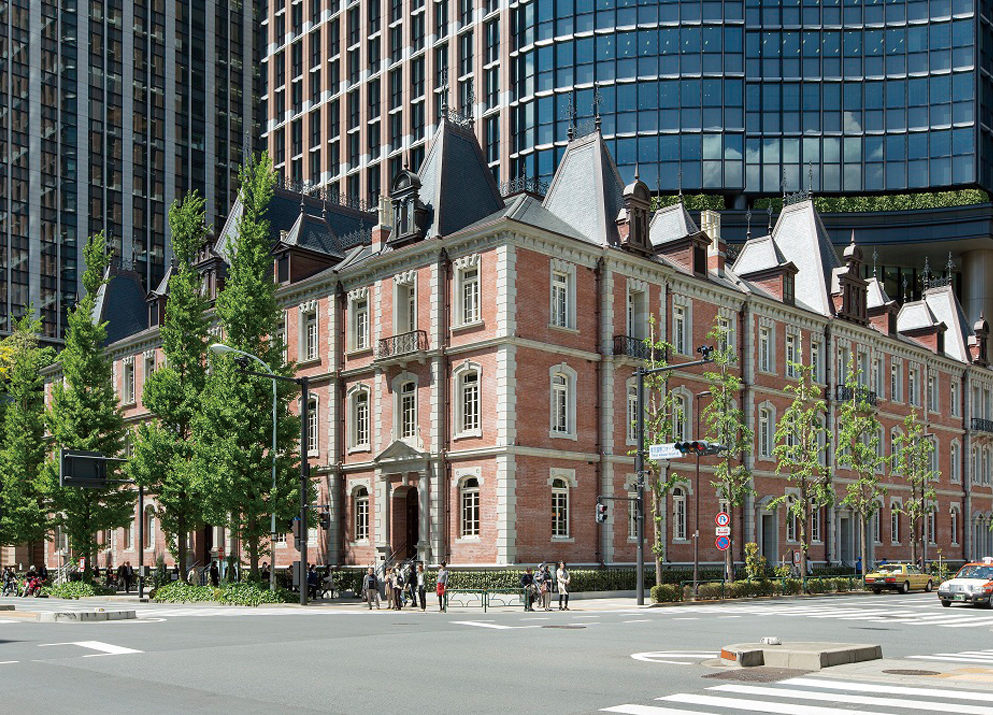
The reconstructed Mitsubishi Ichigokan. On the first floor is a café, the museum shop, the Mitsubishi Ichigokan Archive Room and the Mitsubishi Center Digital Gallery.
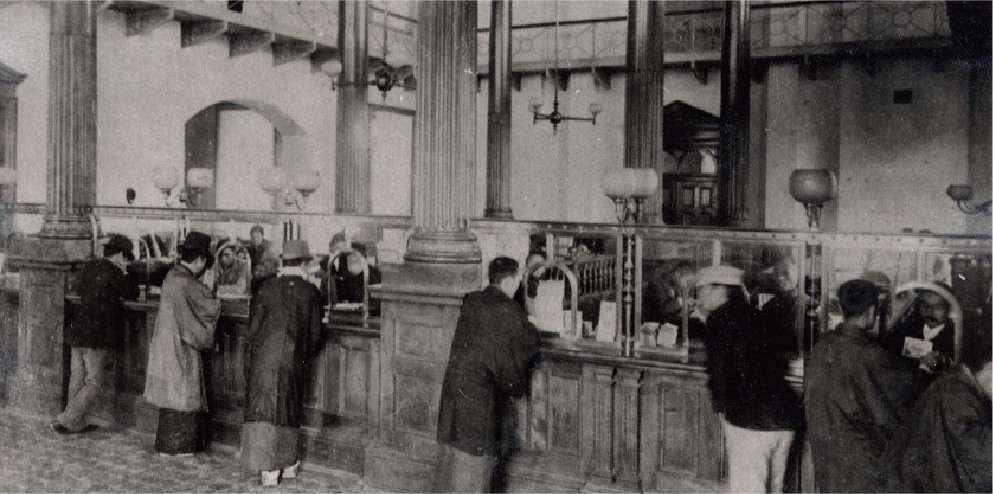
The café space was formerly a bank office in the Meiji era
The Mitsubishi Ichigokan Museum opened in Marunouchi, Tokyo,
in 2010 as an art museum. It holds three special exhibitions
a year featuring mainly modern art from the latter half of
the 19th century to the first half of the 20th century. The
original red brick building was designed by Josiah Conder
using the Queen Anne style of architecture from the
Victorian era in England. It was erected in 1894 by
Mitsubishi as the first Western-style office building in
Tokyo’s Marunouchi district. The original structure was torn
down in 1968, but it was reconstructed as faithfully as
possible with reference to the original building plans and
photographs. Collections center on Western art from the late
19th century, the same era as the original building. These
include works by Henri de Toulouse-Lautrec, Odilon Redon,
and Félix Vallotton, among others.
Inside the museum, there is the Café 1894; Store 1894,
the museum store; the Mitsubishi Ichigokan Archive Room,
where visitors can feel the history of Marunouchi; and the
Mitsubishi Center Digital Gallery, where they can view the
Mitsubishi Group’s archived cultural assets. The museum is
truly a space in which visitors can imagine the era when
Marunouchi was once a red brick city affectionately known as
the “London Block.”
DATA
Location
6-2 Marunouchi 2-chome, Chiyoda-ku, Tokyo
TEL. +81-47-316-2772 (“Hello Dial” information service)
10:00–18:00
* On Fridays, the second Wednesday of each month, and
every weekday of the final week of exhibitions, except
when they fall on a national holiday, the museum is open
to 21:00
* Entry is possible up to 30 minutes before closing
time
* Times are subject to change
* Mitsubishi Ichigokan Museum, Tokyo, will enter a long
period of closure on April 10, 2023. The museum will
reopen in the autumn of 2024.
Nearest Station
5 min. walk from JR Tokyo Station's Marunouchi South exit, or 6 min. from JR Yamanote Line Yurakucho Station's International Forum exit
▶Official web siteThe museum is only open during exhibitions. It may also close on an ad hoc basis. Please inquire for details.
120 years of Nagasaki Shipyard & Machinery Works history housed in a red brick building
Mitsubishi Heavy Industries Nagasaki Shipyard & Machinery Works Historical Museum
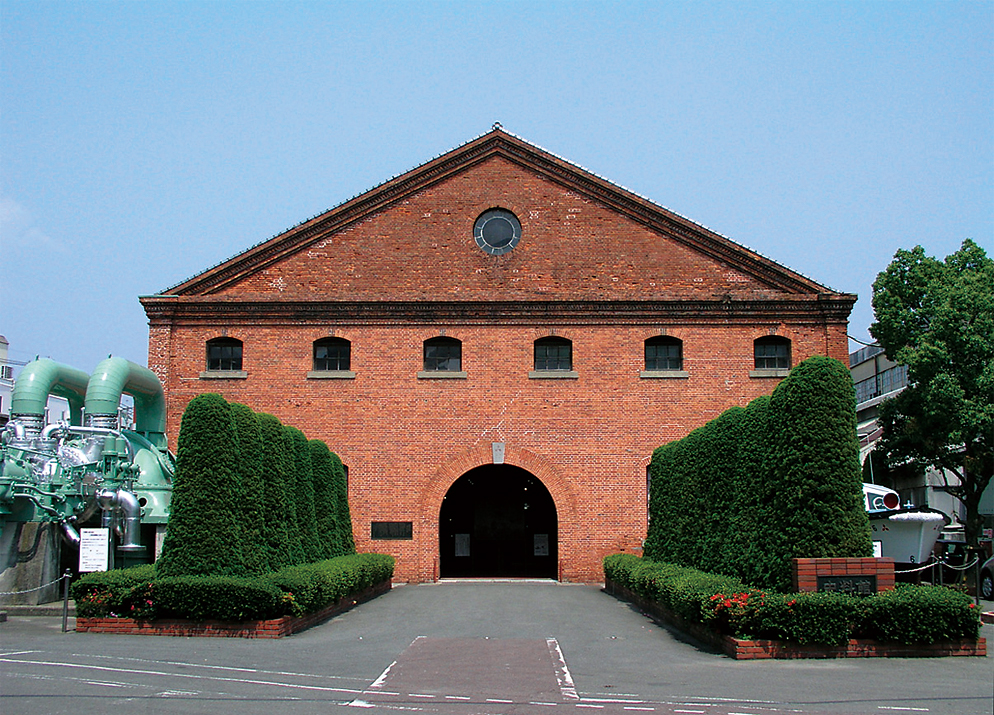
The Historical Museum was opened in 1985 in a refurbished
building on the premises of Nagasaki Shipyard &
Machinery Works. The building was originally built in 1898,
during the formative years of the shipbuilding industry, as
a wood pattern shop for producing the molds for metal
castings in response to the increasing demand for cast-metal
products. It was also the first workshop in Nagasaki
Shipyard & Machinery Works to run on electricity.
Over 900 items are displayed in the museum, including
a collection of the oldest machine tools in Japan and the
first domestically-developed land steam turbine. In July
2015, the building was registered as a UNESCO World Heritage
Site due its significance during Japan’s Meiji Industrial
Revolution.
DATA
Location
1-1 Akunoura-machi, Nagasaki-city, Nagasaki
(Within Mitsubishi Heavy Industries Nagasaki Shipyard
& Machinery Works)
TEL. +81-95-828-4134
The museum is currently closed for repair work.
Pioneer of Modern Seafarer Education Which Supported Japan’s Maritime Transportation
Mitsubishi Merchant Marine School
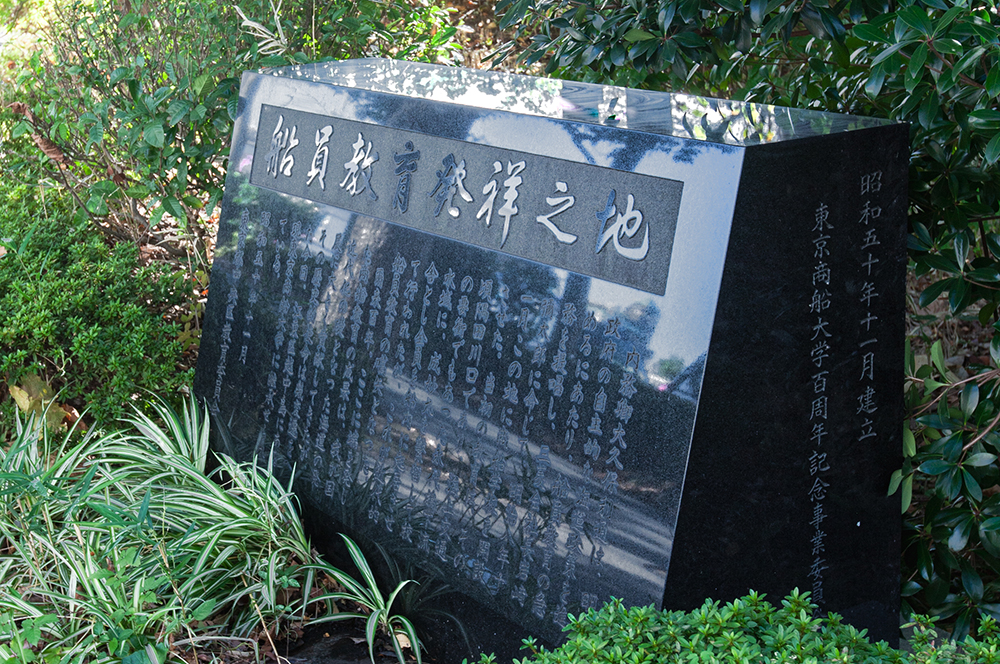
Monument to the birthplace of seafarer education at the west side of Eitai Bridge
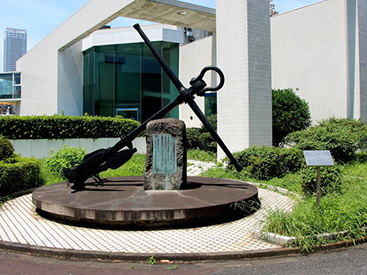
Anchor tower built to commemorate the birth of merchant marine education on the Etchujima Campus of Tokyo University of Marine Science and Technology
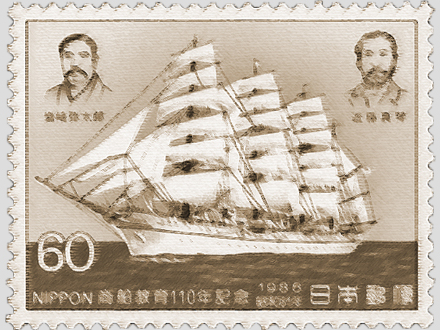
Specially issued stamp bearing the image of Yataro Iwasaki in 1986 to mark the 110th anniversary of merchant marine education
In 1875, aiming to strengthen Japan’s maritime transportation capabilities,
the new Meiji government ordered Mitsubishi Mail Steamship Company, with its track
record in the marine transportation industry, to train sailors. That led to the
company establishing the private Mitsubishi Merchant Marine School. Maritime
transportation in Japan, which had been isolated for a long time, was lagging far
behind that of the great powers in Europe and America. Even in the Meiji period
(1868 to 1912), Japan had to rely on foreign sailors. The Mitsubishi Merchant Marine
School established in such circumstances became the pioneer of modern seafarer
education in Japan.
When the school was first established, it used the Seimyo Maru sailing ship,
which was moored near the Eitai Bridge that spanned the lower reaches of Sumida
River, as a training ship and school building. The school later relocated to
Etchujima in the western part of Koto Ward.In 1882, the school underwent a transfer
from private to public control and was renamed the Tokyo Marine Merchant School. It
then became a national university after the war. In 1957, it was renamed the Tokyo
University of Mercantile Marine. In 2003, The current Tokyo University of Marine
Science and Technology was established through a merger with the Tokyo University of
Fisheries.
Springing from the Mitsubishi Marine Merchant School, the Faculty of Marine
Technology in the Tokyo University of Marine Science and Technology still today has
a campus on Etchujima where the school once stood. Even now, with the university due
to celebrate its 150th anniversary in 2025, the achievements and traditions of the
school are linked with the future. In addition, a monument has been erected on the
west bank by Eitai Bridge in the land where Mitsubishi Marine Merchant School was
established marking it as the birthplace of seafarer education. You can reminisce
about those times there.
DATA
Location
1-30 Shinkawa, Chuo-ku, Tokyo
Nearest Station
Walk for 10 minutes from Tokyo Metro Kayabacho Station
Learning about Mitsubishi’s history near Kyu-Iwasaki-tei Gardens
The Mitsubishi Archives (annex to the Mitsubishi Economic Research Institute)
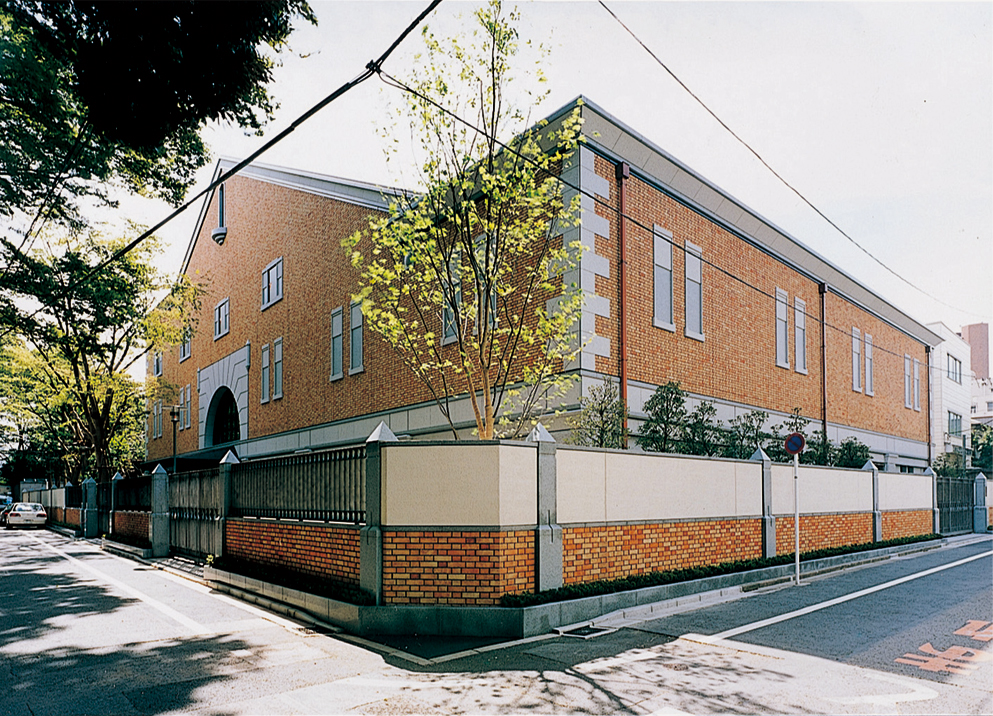
The elegant brick exterior of the Mitsubishi Archives
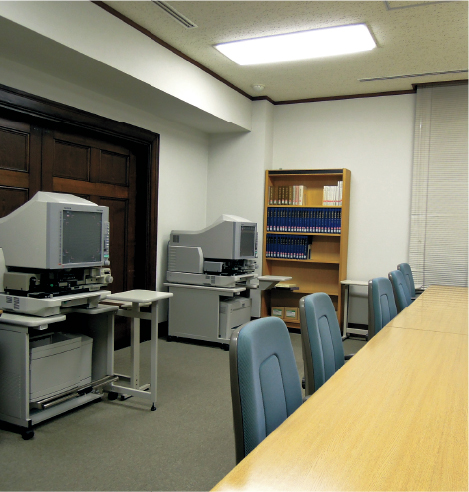
The reading room
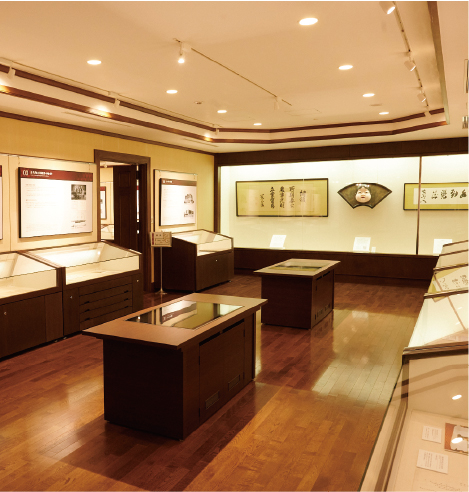
The display makes it easy to understand Mitsubishi’s history and historical background
The Mitsubishi Archives were established in 1995 with
funding provided by the Mitsubishi Kinyokai as an annex to
the Mitsubishi Economic Research Institute (MERI) to
commemorate the 125th anniversary of the founding of
Mitsubishi. The Archives are located on the site of the
former residence of Hikoyata Iwasaki (Yataro’s grandson),
next to the former main residence of the Iwasaki Family
(Kyu-Iwasaki-tei Gardens), an area long associated with
Mitsubishi. The main missions of the Mitsubishi Archives are
to safe keep Mitsubishi’s historical business documents and
materials, to give the public access to these materials, and
to conduct research on the history of Mitsubishi’s diverse
business development since its establishment at the dawn of
the Meiji era, along with that of Japanese industry.
There is an exhibition hall where visitors can view a
panel display of Mitsubishi’s history and its historical
context from the company’s foundation to the present day, as
well as a selection of Mitsubishi’s historical artifacts.
The collection includes original writings of Yataro
Iwasaki, contracts from Mitsubishi’s earliest days, public
records, old photographs, and other items that tell the
fascinating history of industrial development in Japan, and
at Mitsubishi.
DATA
Location
4-10-14 Yushima, Bunkyo-ku, Tokyo
TEL. +81-3-5802-8673
E-mail: siryokan@meri.or.jp
Exhibition hall: No admission fee
10:00–16:30 (Admission until 16:00)
Closed: Weekends, national holidays, and New Year’s
holidays.
Please contact us in advance if you would like to visit
with a large group.
Nearest Station
6 min. walk from subway Yushima Station/ 10 min. walk from Hongo 3-chome Station on the Tokyo Metro Marunouchi Line and Toei Subway Oedo Line.
▶Official web siteThe exhibition hall is open to the public. Historical documents and records available for study by prior arrangement only.
The first piece of Showa-era architecture to be registered as a nationally important cultural property
Meijiseimeikan
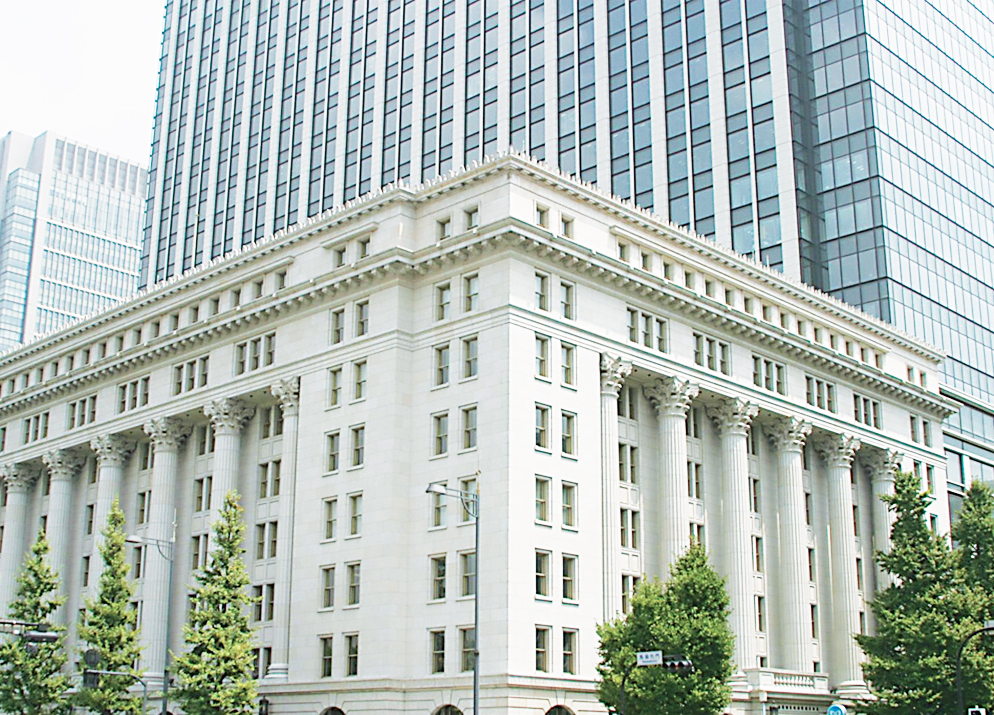
Meijiseimeikan is a reinforced concrete building with a
steel framework featuring eight floors above ground and an
additional two floors underground. Designed by Prof.
Shinichiro Okada of Tokyo Fine Arts School (Tokyo University
of the Arts), an influential figure in architecture at the
time, it was completed in 1934 after three years and seven
months of construction and boasted many advanced facilities
for its time. Meijiseimeikan is considered a masterpiece of
classicism and one of the greatest modern Western-style
buildings.
Since the end of World War II, the building had been
requisitioned by the GHQ and used as a venue for the Allied
Council for Japan. It has a history of surviving the
tumultuous Showa era. Seikado@Marunouchi, the gallery of the
Seikado Bunko Art Museum, will open on the first floor of
Meijiseimeikan. The relocated gallery will display the
museum’s art collection.
DATA
Location
2-1-1 Marunouchi, Chiyoda-ku, Tokyo
TEL. +81-3-3283-9252
Open: 11:00-17:00 on Saturdays and Sundays
16:30-19:30 on Wednesday, Thursday and
Friday
* From Wednesday to Friday (except on national holidays),
part of the second floor and the first floor lounge is
open to the public.
* Closed: From December 31 until January 3, and days when
the building is inspected.
Nearest Station
Tokyo and Yurakucho Stations on the JR Yamanote Line/Nijubashimae Station on the Tokyo Metro Chiyoda Line
▶Official web site (Japanese version site only)Gazing out at Lake Ashi alongside azaleas planted over 100 years ago
Hotel de YAMA
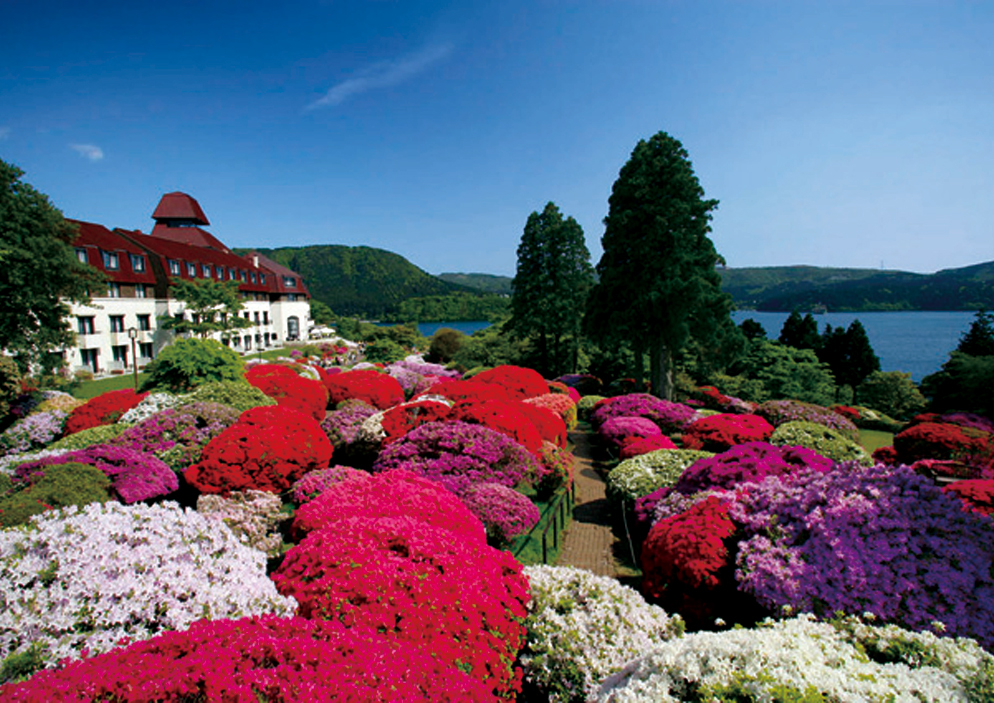
A resort hotel is situated by Lake Ashi on the former site of Koyata Iwasaki’s villa. The hotel’s vast garden contains 100-year-old azaleas said to have been played by Koyata Iwasaki himself. In addition to the flowers, you can also enjoy the changing of the seasons by Lake Ashi, with Mt. Fuji standing majestically in the background.
DATA
Location
80 Moto-Hakone, Hakone-machi, Ashigarashimo-gun,
Kanagawa
TEL. +81-460-83-6321
Enjoy a stroll at an Edo-era garden that retains the spirit of waka poetry
Rikugien Gardens
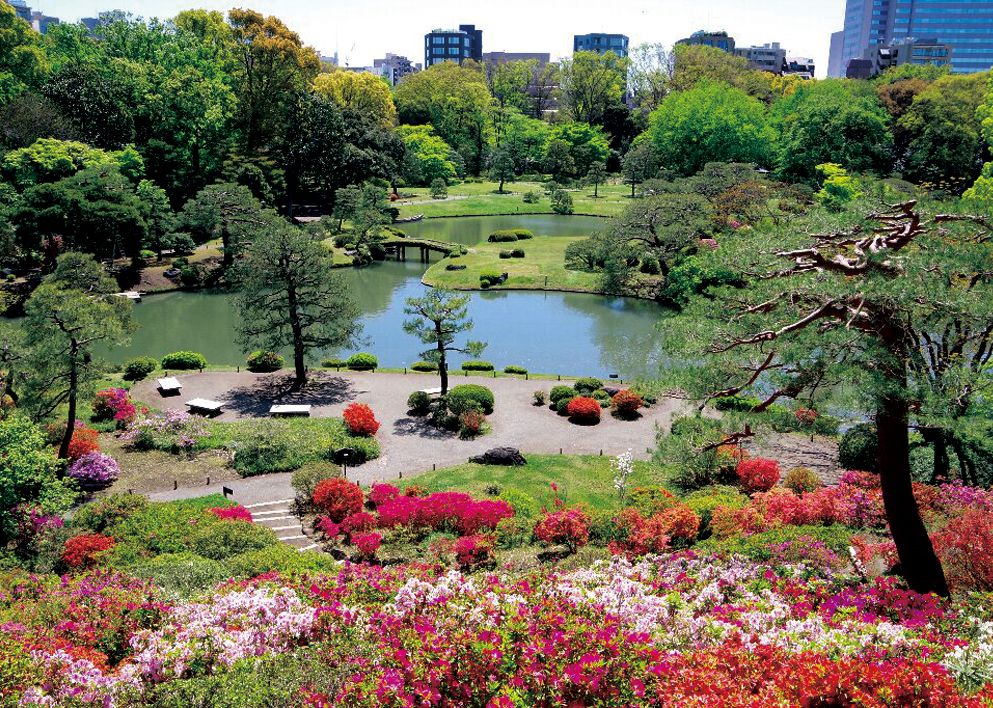
A confidant of one of the early Tokugawa shoguns built this
exquisite Japanese garden in what is now Tokyo. It was
counted as one of the two greatest gardens of the Edo
period. (The other is Koishikawa Korakuen.) The name
“Rikugien” comes from the six themes for waka poetry
described by Kino Tsurayuki, a famous Japanese poet in the
Heian period.
This delicate garden contains a man-made pond and
hills raised at the corner of Musashino plain, which gives
it a feeling of warmth. It took seven years for the garden
to be completed. Yataro Iwasaki obtained the garden at the
beginning of the Meiji era. His descendants donated it to
the City of Tokyo in 1938. Currently, the garden is
nationally designated as a Special Place of Scenic Beauty.
DATA
Location
6-16-3 Hon-Komagome, Bunkyo-ku, Tokyo
TEL. +81-3-3941-2222
Hours: 9:00–17:00 (Entry permitted until 16:30)
Closed: December 29 until January 1
Nearest Station
Komagome Station on JR Yamanote Line or Tokyo Metro Nanboku Line/ Sengoku Station on the Toei Subway Mita Line
▶Official web site